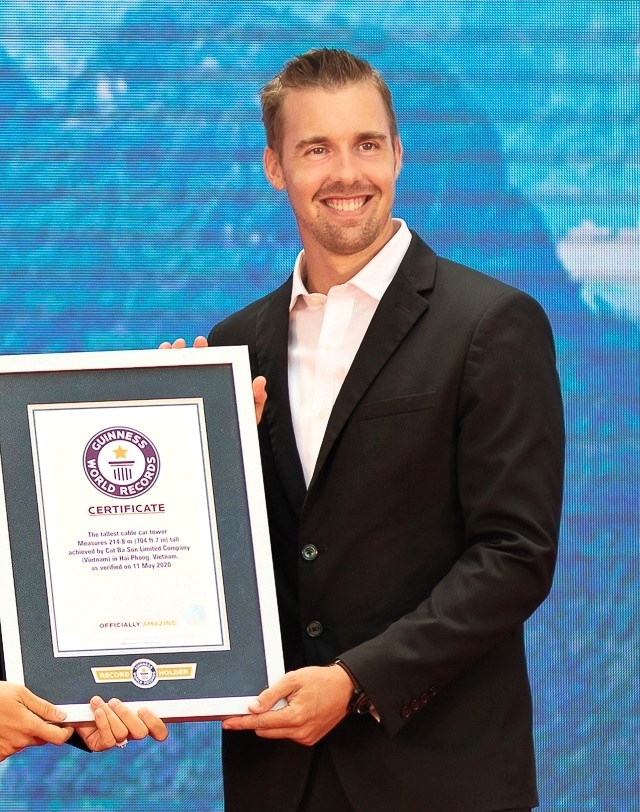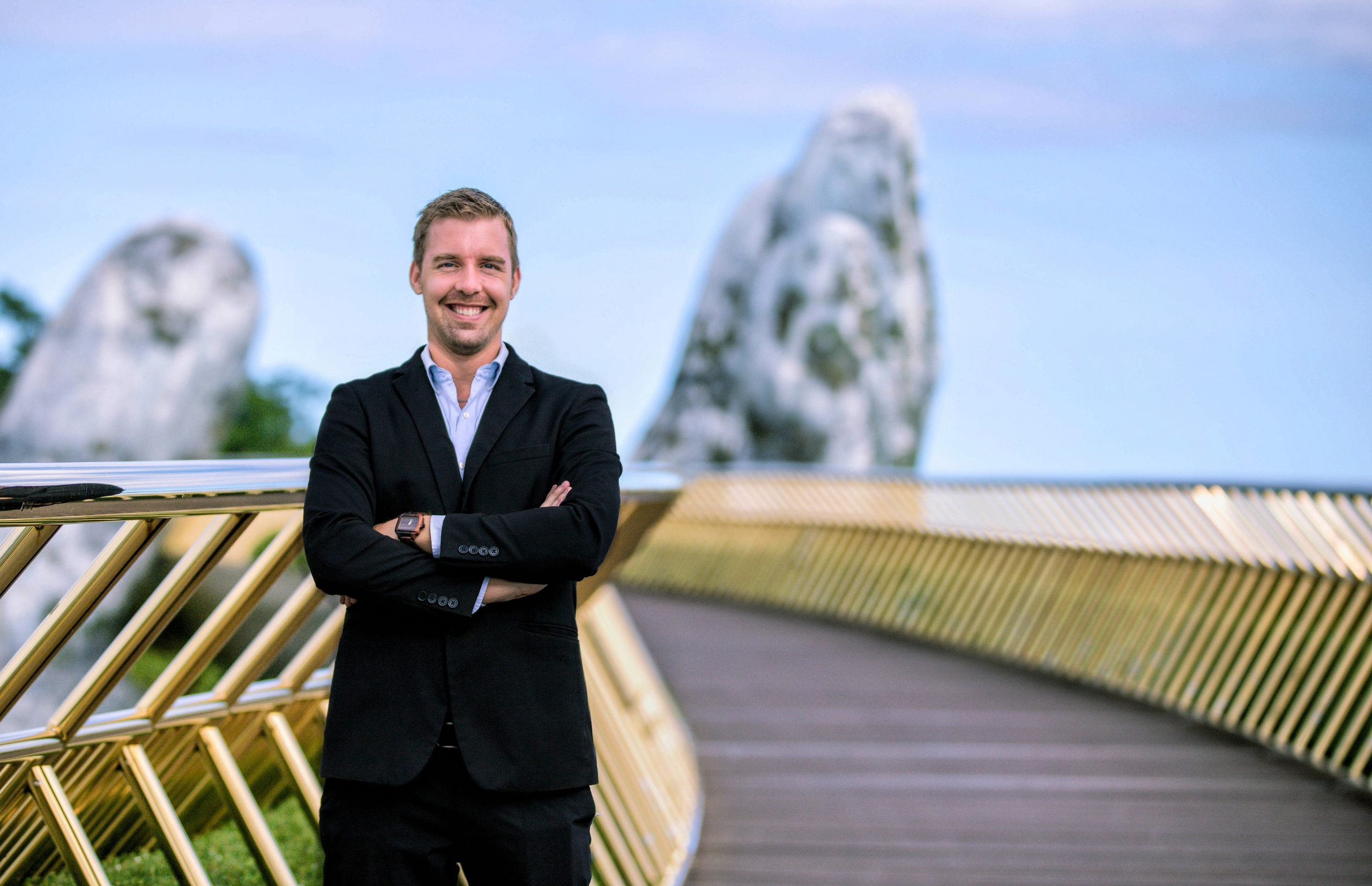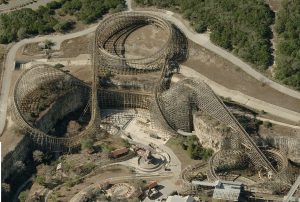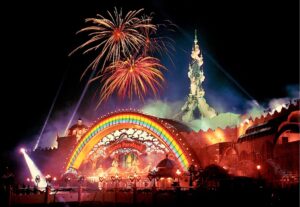Table of Contents
ToggleWon here. This is my interview with my friend Daan Duijm, an operational wunderkind whose career has taken him across Southeast Asia and the Middle East.
Here we cover a wide range of topics, including his inspirational beginnings (lots of hustle!) in the industry, his work with one of Vietnam’s largest theme park and real estate developers, his experience opening parks from scratch, some recommendations about operational and development best practices, and the cultural uniqueness of Vietnam.
Enjoy my conversation with Daan.
Origin Story
Won: I was doing a little background research on you, and before you were this world-famous director of operations at theme parks around the world, apparently you started as a fitness director on Disney Cruise Lines.
So what was that about? Were you teaching classes and then could you maybe outline how you went from there to where you are now? It looks like you circumnavigated the globe and went to a lot of different places.
Daan: Yeah, I think it all sort of starts in the Netherlands about 15+ years ago when I was trying to figure out what I wanted to do. And I had just graduated high school and I sort of had two choices because I wanted to go into sports or the military.
And so I was able to choose a fast track education that allowed me to be a sports instructor for the military. And I had an internship with the Marine Corps and it was only two years. And so I got a really good practical sort of like, almost like an associate’s degree. But that was really nice. Then I applied to be in the Marine Corps, and then I got in, and while I was waiting to start, I’m like, is this where I want my career to go?
Because we have a professional military in Holland, and so it’s basically, you’re going to be there for at least five years. You sign a contract, like it’s a proper job to become an officer at the Marine Corps. And so I’m like, what can I do after this? I’ve had a blast learning about this. I had loads of fun, but maybe this is not what I want to do for the rest of my career. So what do I really love to do? And I love working with people. I love, like, maybe not entertaining them, but making sure everyone has an enjoyable time and really making sure that I work with people.
And I thought, okay, what else works with people? And then I studied, so I moved back to university to study leisure management, and I was able to do an associate’s degree, and then you can pause your degree if you want, and then take a year off you don’t have any more student loans and before you move into your bachelor, and I took that opportunity because I saw an ad in the newspaper, and this relates back to your question about becoming a personal trainer on a cruise ship.
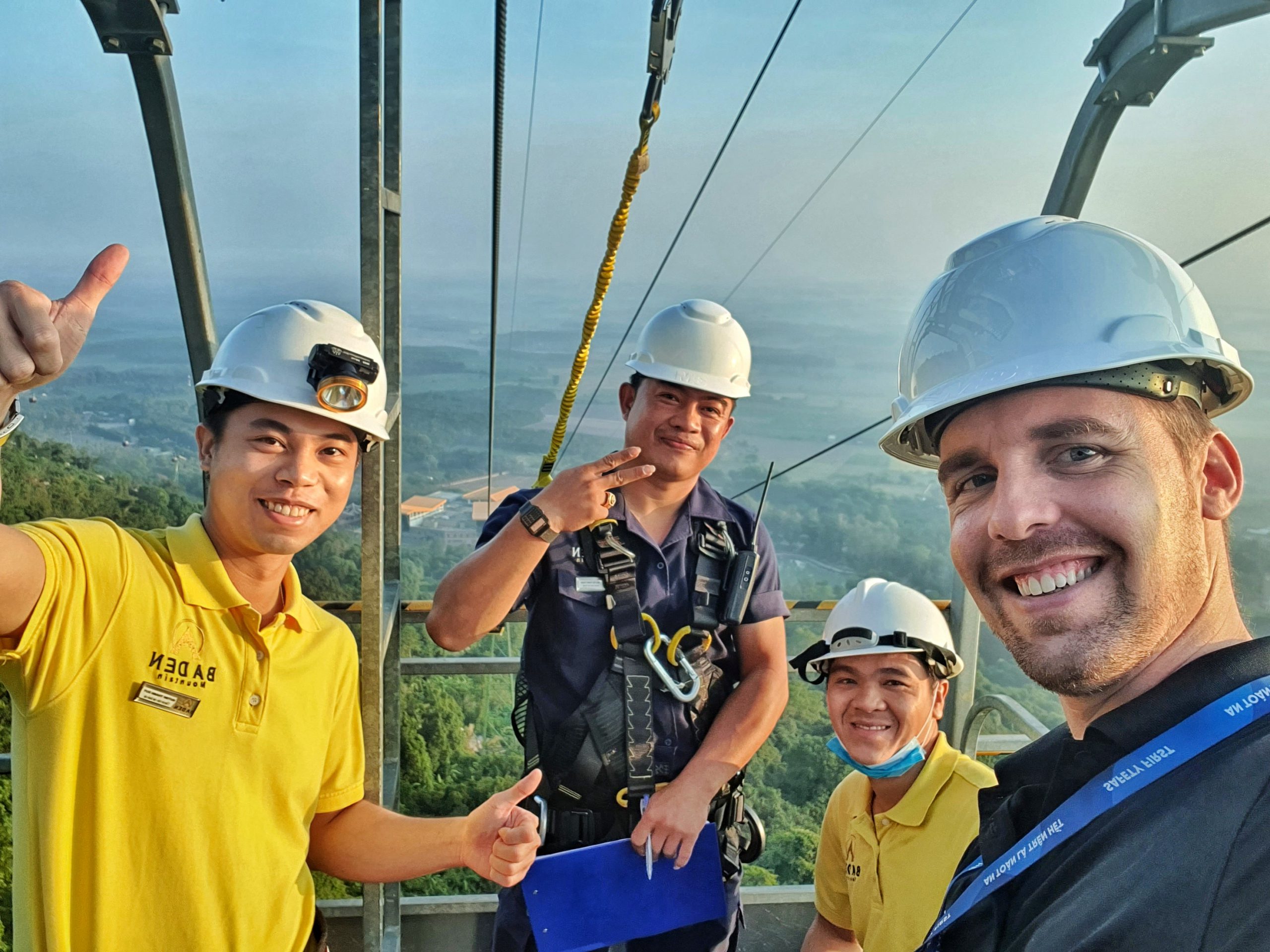
So the fitness director is the fancy word that Disney uses, right? To make everyone feel happy about themselves.
But it’s really a personal trainer on a cruise ship. And the way that it works is that it’s all outsourced. So Disney doesn’t train their own personal trainers and every cruise ship pretty much in the world, all the big ones, they all use the same company that provides their spa personnel. So that includes the massage therapist, but also personal trainers.
And so they send you over to the UK, you get two weeks of training, and then you get told, hey, we’ve got a ship and you’ve got 12 hours to pack, and then you need to fly off to wherever that ship is.
And so the way that they put you on these ships is there’s two things. One is the type of ship and the brand matches with your personality, and then the ship determines how good you are in generating revenue.
So the best ships take the people who make the most revenue because it’s a commission-based job. When I started, there was no base salary. So a hundred percent commission.
And then the way that your personality works, if you’re very outgoing, you might be placed on a ship like Disney. If you are a little bit calmer and more reserved, you might go on a cruise line that really targets sort of the elderly population and goes around the world.
And so they were like, oh, we’ve decided you’re going to go to Disney based on this and this, and you’re going to go to this ship based on your performance. I’m like, Disney has a cruise ship?
What? I did not know. This was not part of the plan. But it sounded amazing, right? I’d obviously heard about Disney, but I wasn’t into theme parks when I studied whatsoever. And so I spent nine months doing the contract there, having a blast, not making a lot of money, but really enjoying my time traveling throughout the Caribbean. And then I’m like, wow, this is what I wanna do. I wanna continue to make people happy and surrounded by palm trees. And fast forward like 12+ years, this is where I’m still at. I look outside and see palm trees.
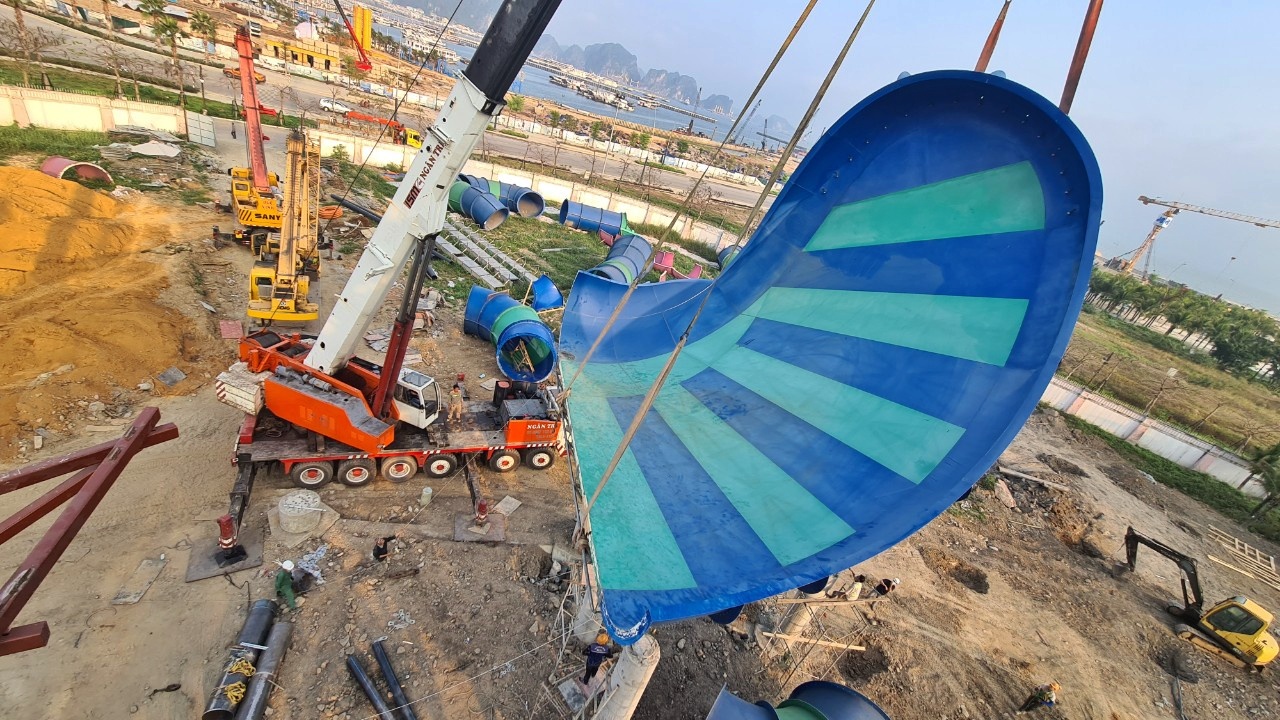
Daan: That’s the short introduction.
Won: Sure. Thank you. But you made a lot of stops along the way. So right now you’re currently in Vietnam but it looks like you have experience all over Southeast Asia and in the Middle East.
So, how did you go from Disney, or generally from a fitness position to directing operations at theme parks?
What were some of the steps along the way?
Daan: Sure. I finished my time with Disney. I went back to university to finish my bachelor degree. And at that point I was really clear, okay, this is what I want. I want to do something with theme parks, and I wanna be in great places, beautiful places.
And so when I had to pick my graduation assignment, I sent 120 different emails out to theme parks all over the world to ask them, can I do my graduation, like my bachelor degree thesis here. And I had about four to five replies.
And one of them was from Dubai that said, ah, look, we don’t have anything. One was in Korea that said, ah, it’s going to be really tough due to translation. And one was in Malaysia for a company called Sim Leisure.
And they said, oh, we’d be interested. And so I went over there, I arrived, and within the first week, the owner sat me down. He is like, okay, what’s the deal here?
I’m like, as I’ve written down before and as what you agreed to, I’m supposed to work like at least four days a week on my assignments, and then maybe one day a week I can help out with the company.
It’s like, oh, okay. Well, we really want you to switch that around and spend four days working and one day a week on your thesis, and actually we want you to work six days a week, so maybe you can just do like your thesis one day and then five days work in the company.
And over the first month that sort of split, and I was working very much inside the company. But still able to do my graduation over there and realizing that, oh, it’s a great place to be, because it was small park in Malaysia outdoors with a lot of natural attractions.
So there were no rollercoasters, but there was a giant slide, sort of like an indoor dry ski slope. There was rock climbing, there was loads of other activities, and it was really trying to bring the natural experience that kids used to have in Malaysia back to life, like tree climbing and those sort of things. So the concept is really good. It still exists.
It now has a theme park, a water park, a glamping area. And so the owner does quite well. That was a very good experience. But at the same time, I was like, okay, this is quite small.
We had a total team of about 80 people. And so I had to go back to the Netherlands to graduate.
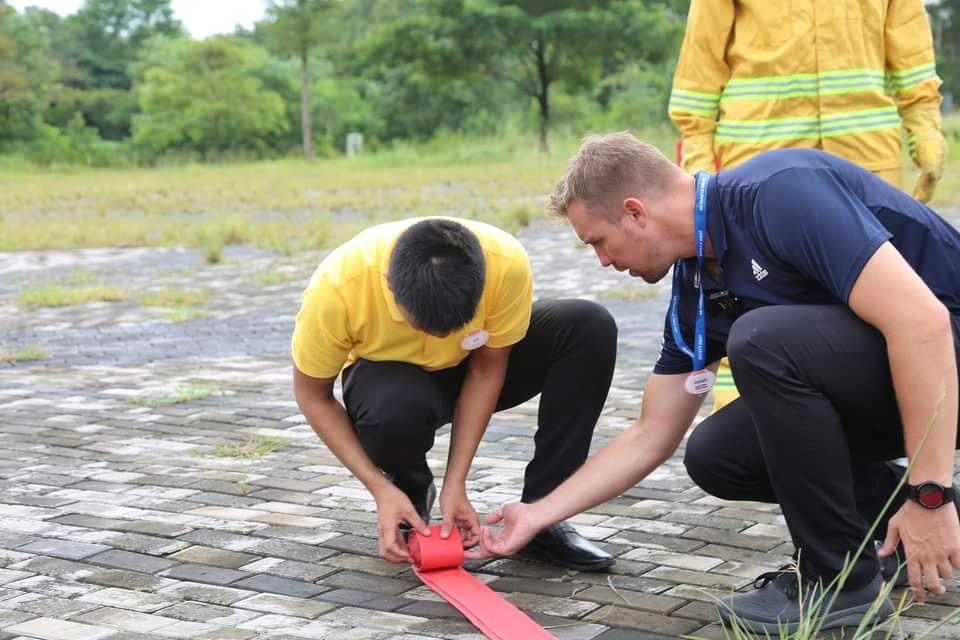
And while I was back in Asia for a little bit of travel, after I stopped that job, I started to email those same 120 companies again.
And luckily this time I didn’t have to email them all because the company that had replied from Dubai that said, oh, we don’t have anything a year ago now replied and said, we have a management traineeship.
And so I’m like, okay, well that’s a great way to get into a larger organization. They had a waterpark.
And so I did the first interview while I was in Thailand, and then didn’t hear back from them. I’m like, okay. And so I sent a follow-up email two weeks later, and I said, hey, I’m going to be in Dubai in two weeks, because I was flying back anyway to the Netherlands.
And I’m like, it doesn’t cost me much extra to stop over. And so I stopped over in Dubai. They’d never asked me for a second interview, but I had a second interview when I came to Dubai.
They were like, oh, yeah, stop over.
And they arranged their HR director, and first question they asked was, did you come here? Did you come all the way to Dubai just for this interview? I’m like, yes. And so they were happy about that. And I got that management traineeship in Dubai.
And so I didn’t even get to pick up my diploma or do an official graduation. I graduated and had them shipped the diploma to Dubai because two weeks after I defended my thesis, I was working in Dubai in a water park called Wild Wadi in Dubai. So that was how I got to Dubai.
And then about two years in into Dubai, the colleagues and friends that I built up in Malaysia, one of them had moved to Legoland and they were looking for a waterpark manager in Legoland, Malaysia.
So I took that job. So I went from sort of assistant manager, what that management traineeship was to manager in Malaysia. Then the manager of the attractions in Malaysia left and she moved to another company and they thought it would be a good idea to combine attractions, like all of the rides with the waterpark.
And so after a year, I took on those combined positions, and after two and a half years, there was a request from a recruiter to become the general manager of Indonesia’s largest indoor theme park. Trans Studio Park in Bandung.
And we had a great interview because they said, oh, look, we’re really going to professionalize and we’re going to hire two more GMs for other parks that we’ve got developing.
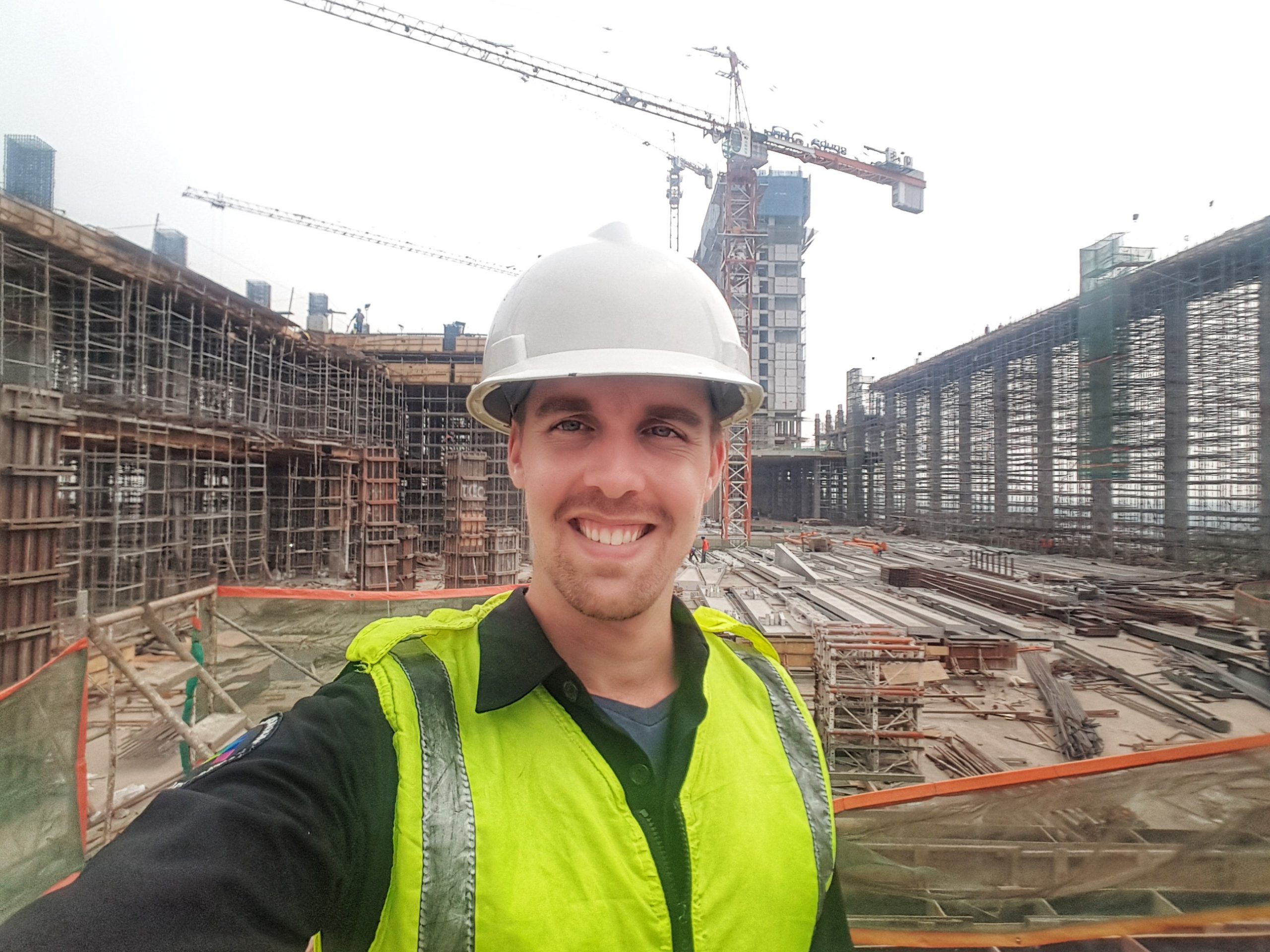
And yeah, we’d love you to be a part of our first park here in Bandung. And then there will be a larger team that will come in. And after nine months, they were struggling to find a GM for the Jakarta theme park.
And so they asked me to actually take over that and become the setup GM for that project. And so when they asked me that, I went to sites and there was just a ground level, like this was at a mall, and there were no walls, there was no ceiling, there was no nothing.
So I came there just bare concrete. And about eight months later, we had 16 different attractions, and we opened that park. And so it was a crazy time.
Won: In eight months, you said?
Daan: Yeah.
Won: Wow. Okay.
Daan: It was very rapid. And after six months, the chairman said, we have to open in a week. I spent three months without a single day off.
In the last month, if I was home before midnight, I would go to work at 8:00 AM, if I was home before midnight that would be an early day at that time.
So it was really just an insane situation. 24 hours contractor work on site after the first three months and inspections, all of these very common things that you would do just to make sure, like the contractors were saying, oh, yeah, we’re working 24 hours, and you’d literally have to go there at midnight to check are they actually having the lights on?
Cause in the first month that they said they were working 24 hours, there were no lights. How can you work 24 hours?
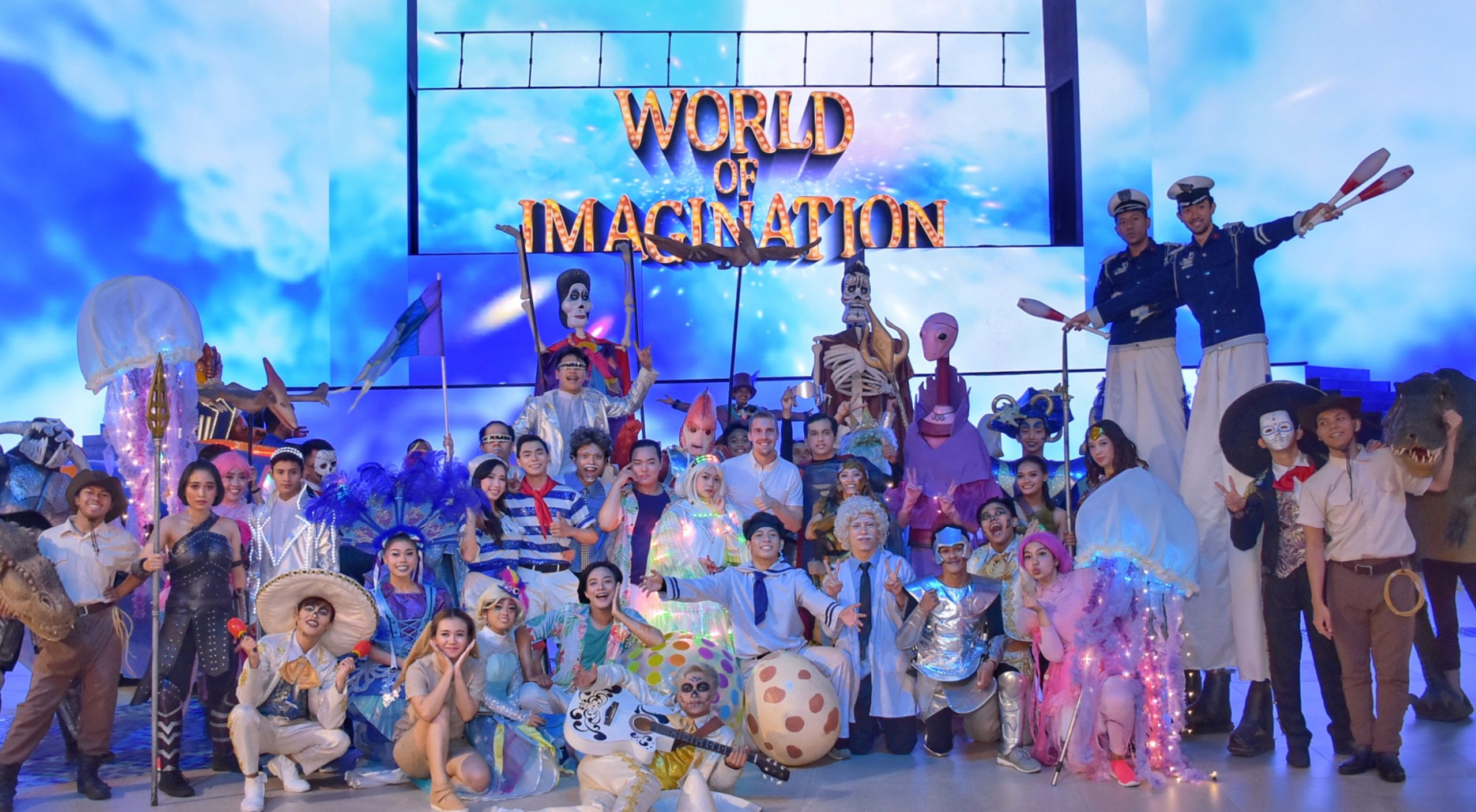
So, you learn a lot of practical tips to understand what people are really doing and how to make things work. And yeah, the Asian way of making things work is oftentimes just very rapidly; the chairman has a vision, right.
It’s not just Asia, but it’s the family company culture. Chairman is the leader. He decides, this is my vision, this is what I want to do. And then everyone’s job is make sure that happens. So that’s been a really fascinating thing to see and to grow from the first time that I was in Malaysia with that smaller company, to now being a part of a bigger company where the company also owns like a part of the national airline. It owns banks, hotels, really a much larger company with multiple parks.
Sun Group
Won: And so you went from Indonesia to Vietnam directly, and then is that how you found yourself in your current position?
Daan: Correct. Yes. I met up with my current boss few years ago in Malaysia while I was in Legoland. And he reached out because he needed somebody to be in charge of new openings. The company here, I don’t know if you want me to give a background of the company.
Won: Yeah, that’d be great to hear.
Daan: Yeah. Because many people, they often don’t understand the scope of the group, and they’re not really familiar because there’s not a lot of information that often comes out.
Won: Absolutely. It’s not public.
Daan: Yeah. Or they focus very much on the Vietnamese market. And so the marketing that is very successful is the Golden Bridge. That is the key thing. But even that, sometimes we have visitors who come and they’re like, oh, I didn’t even know there was a whole theme park behind it.
I thought it was just a bridge and okay, we had to take the cable car, but I didn’t realize the size.
And so, Sun Group is a group that started in the Ukraine as a noodle sales manufacturer. The owner and the chairman had studied in Russia, moved to Ukraine, and sort of was part of this first wave of entrepreneurs that really started these indoor malls, selling noodles, then expanding to own the mall to operate, then building a staff housing, and then even building a small waterpark in the Ukraine before moving back into Vietnam, which was the perfect timing.
He’s friends with the largest company here in Vietnam, Vin Group as well. And so they both sort of came back around the same time with this vision of really wanting to make Vietnam grow and develop.
And the things that they were able to see over in Russia and Ukraine, bring those and develop them more than what there is now and having good government connections and being there at the perfect time 15 years ago.
They opened up Bana Hills as their first park with the first cable car going to the top of the mountain. And then they’ve grown from there. They specialize in three different areas, which are the hotels, real estate, and then theme parks.
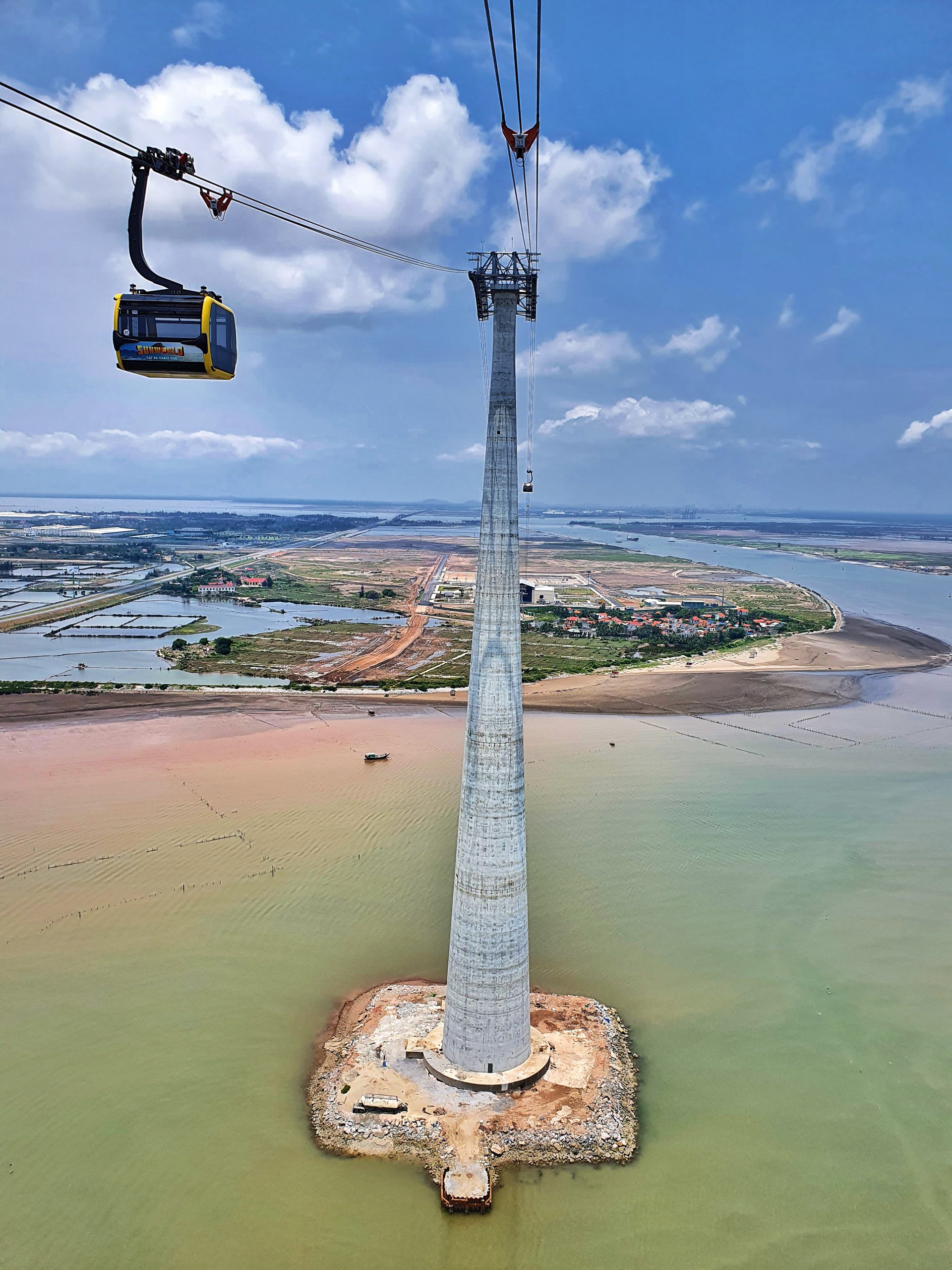
And with theme parks, there’s a large variety of parks. So at the moment, there’s seven locations throughout Vietnam.
And within these seven locations, we have some parks, some locations that are just cable cars and are planned to be further developed, like Kaba, which is a small island in the north of Vietnam. It’s very beautiful. There’s a large national park there, but that is at the moment just one cable car.
And there’s locations that have multiple cable cars and some funiculars usually to the top of mountains.
So what Sun World really specializes in is to identify these beautiful, unique locations, and then come up with an entertainment concept that fits within that area.
And so there’s some parks that are very focused on a spiritual journey, like in Tening in the south of Vietnam, there’s a park that focuses on Buddhism. They’ve built a very big Buddha statue, multiple fountains.
And when I started there, the first cable car opened, and now four years later, they’ve got the third cable car and another cable car that is under development.
Then there’s also a park in the north that is more about the highest mountain in Vietnam, so more about nature and culturally still significant, but definitely less about the religion and more about just the beautiful nature that there is there.
And then there’s a few other parks that have theme parks and water parks, like in Phu Quoc and in Halong Bay.
And then the key park is Bana Hills, which all became sort of famous a few years ago in 2007 or 2008, they opened up the Golden Bridge, and that was really a key turning point of visitors coming to Danang and seeing this golden bridge.

The promotions looking really well, you can see the backdrop on my video. That’s very nearby the Golden Bridge. And so that’s a few you can see on good days.
You see this golden bridge with the hands holding it up and that’s been really an opportunity for everyone to come to Danang to do that.
Basically, if you come to Danang and you don’t see the Golden Bridge, people wonder, it’s like going to San Francisco and people are like, you didn’t see like the San Francisco Bridge, like you’ve missed out on something.
New York and not seeing the Times Square. Not why would you come, but you’ve missed a really beautiful, unique experience. And then, yeah, there’s an indoor theme park around it, and it’s really themed as a French village.
So 15 years ago, obviously the Vietnamese didn’t have the resources to travel as much, and so the vision of the chairman was to recreate an old 1700s-style French village.
And so that’s really beautiful. There’s an authentic church. There’s multiple castles and it’s really an impressive view.
Won: I actually wanted to get into this later, but now that it came up we can talk about it now.
Which is that I think the Vietnamese market situation in terms of theme parks is different from anywhere in the world. It’s essentially just like two very big players in Vin Group and Sun World or Sun Group.
What’s further fascinating is that they both have like very different kind of orientations or like positioning. VIN Group seems like the theme park functions as like an anchor to a larger master plan or resort. Whereas Sun Group takes advantage of like the natural surroundings or the spiritual nature of the development and always puts in a cable car.
And so when you mentioned that both of them had come out of Ukraine or somewhere in Eastern Europe at the same time, and then come and established these, that’s really fascinating to me.
Do you know when they came over to Vietnam and why they started in themed entertainment? Did they just see that tourism was going to be something important to the economy?
Daan: I’ll speak on behalf of like Sun Group, or not on behalf of, but what I think based on my experience here, which is that the chairman that came back here ago, if you see the pictures from Danang 15 years ago, there was very little.
I don’t wanna say it was a fishing village, because it was already a city. But it was a massive difference. The amount of bridges now that connect the beach sites to the city side, it really went through a massive development.
And I think that Chairman had a really good vision saying that we have to deliver something that the people can do, and something that they can enjoy. And so, as far as I believe Sun Group was the first one to build the Bana theme park.
And I think that’s what gave the idea to other parties. And at that point, I think only Vin sort of had the resources and the size to do something similar.
And so you have this idea that Danang sort of belongs to Sun Group because there’s multiple hotel projects, and Vin really built a big project in Nha Trang.
Those are both coastal cities, sort of in the center of Vietnam.
And Nha Trang is a bit more south, but they really wanted to deliver great experiences for the Vietnamese. I don’t know if it was luck or vision but picking out that first location in Danang where it was on the top of a mountain, beautiful inspired by the French, the French used to have a colony up here.
And so there were definitely authentic reasons to do something up here. There used to be a cable car, but very old and outdated.
And so, I think the pitch to the government initially was, we’re going to replace that cable car and we’re going to really try to make this a beautiful location where people can spend their time and really enjoy.
And so I think that when you see what Sun Group did was very much trying to deliver that great experience, and I think Vin looked at that and put a smart business model behind that seemed to also work in China and say, hey, look, if we just have a larger community, then it’s easy for people to come to the park.
We can also theme the whole area. And so it sort of sets it apart from everywhere where there was construction. The location that was built in Ukraine, like the staff housing, the apartments are just gray blocks.
And I think, I hope that what they wanted to avoid was just a whole bunch of gray blocks here in Vietnam with housing and to deliver a beautiful themed place to play and stay.
Core Expertise
Won: Great. I actually wanted to back up a little bit. Could you describe what it is your expertise is in?
We kind of alluded to it, you’ve had management positions and you’ve done operations, but what is the general body of work that you specialize in?
Daan: So it is changing sort of over time, because initially I was focused on water parks. This was in Dubai. I started my career in Malaysia. But that was just a lot of just getting into the industry.
And then Dubai was really that opportunity to go to different departments because as part of that management traineeship, I spent six months as a lifeguard, three months in admissions as acting admissions manager.
And then also taking on a Halloween project.
So it was general management but focused on water parks, and really with an expertise of lifeguarding training.
And then moving more into a wider view of management of both water parks and attractions in Legoland.
And then Indonesia was really the first, well, I had an attraction in Malaysia that I opened with Legoland. And based on that, and I think the brand of Legoland, I got the opportunity to move to Indonesia where really to build a whole park from scratch.
At one point I was the only foreigner in the theme park division. They had some foreign GMs, but it was me sitting with the local design team and the foreign ride manufacturers because they didn’t have anyone else.
And so I had to learn very quickly on how do I try to make this work. When I got hired, I was the first person they hired, and a month later I had 14 people, and eight months later I had 600 people.
So it just ballooned. And I had to spend a lot of time learning and figuring out best practices in setting up that park. And so that then gave me the opportunity to move here and both do operations and set up.
And so that’s what now summarizes I think my expertise really to understand these developing markets both in the Middle East, but also here in Asia where they say, okay, we don’t have Disney money.
We don’t have the universal way of planning a park for years and years and years. We have something that needs to go from nothing to a fully operational park in two years.
And we need to, because everything around us is moving so fast. And so I think the development, the pre-opening and the operations is what I specialize in. And we can dive more into that because here I’ve been able to do a lot of park openings now that we’ve got the base of what Sun World really is.
Cultural & Regional Differences
Won: I would love to hear about that, specifically with Sun World. But before that given your experience across so many different countries, have you noticed any notable differences between cultures and countries in terms of the operations or guest experience or whatever?
I’m sure it also differs by the attraction type, but are there any generalizations that you can touch on?
Daan: Yeah, I think that when people are not familiar with an area, they think oh, we’ve got Europe and Asia or the US and Asia, and they’re very different, or the western world and the eastern world, and that’s very much true.
They’re very different. But even when you dive into Asia, I’ve been lucky to work now in three countries, and you can add Dubai into there as a fourth if you consider that part of larger Asia.
But it’s very different between Malaysia, Indonesia, and Vietnam. And I think Vietnam stands out the most there just because they’ve got a very different background to the other two.
For example, if you look at some of the characteristics of both Malaysia and Indonesia, they have been colonized by western countries. Right. Indonesia, by the Dutch and Malaysia, by the English.
And so they’ve a western mindset in some things. If you look at how the law is built up, the government is organized.
Some of the ways of thinking, you can see that there was a mix between these two different cultures.
And each country is very unique on their own, but you can definitely see an influence there. And then you’ve got religion.
So, you’ve got the structure of the country and what they’ve been influenced by their history. And then also the religion plays, I think, a part in that, in the way that people collaborate and work together.
You can see that cultural dimensions, I think are influenced by religion as well. And so you can see a difference in, for example, that the way that many Asian countries work is based on a group culture.
So this is, we must do what’s best for the group instead of what’s best for the individual. And so that means people are willing to make sacrifices in regards to their own personal situation, but it also means very practically the way that you give feedback.
I failed a bunch of time trying to get things to change in Malaysia because my way was the Western way. And saying that, oh, okay, these are the things we have to change. And yesterday I saw you do A, B, C, but really that should have been the other way around. And this wasn’t good. And these are the things we have to change.
Or, wow, I’d like to celebrate this person that did a great job yesterday. And they wouldn’t really respond. They wouldn’t say, oh, thank you. Thank you for saying that, I feel proud of what I’ve achieved.
No, because I singled them out both positively and negatively as part of the group.
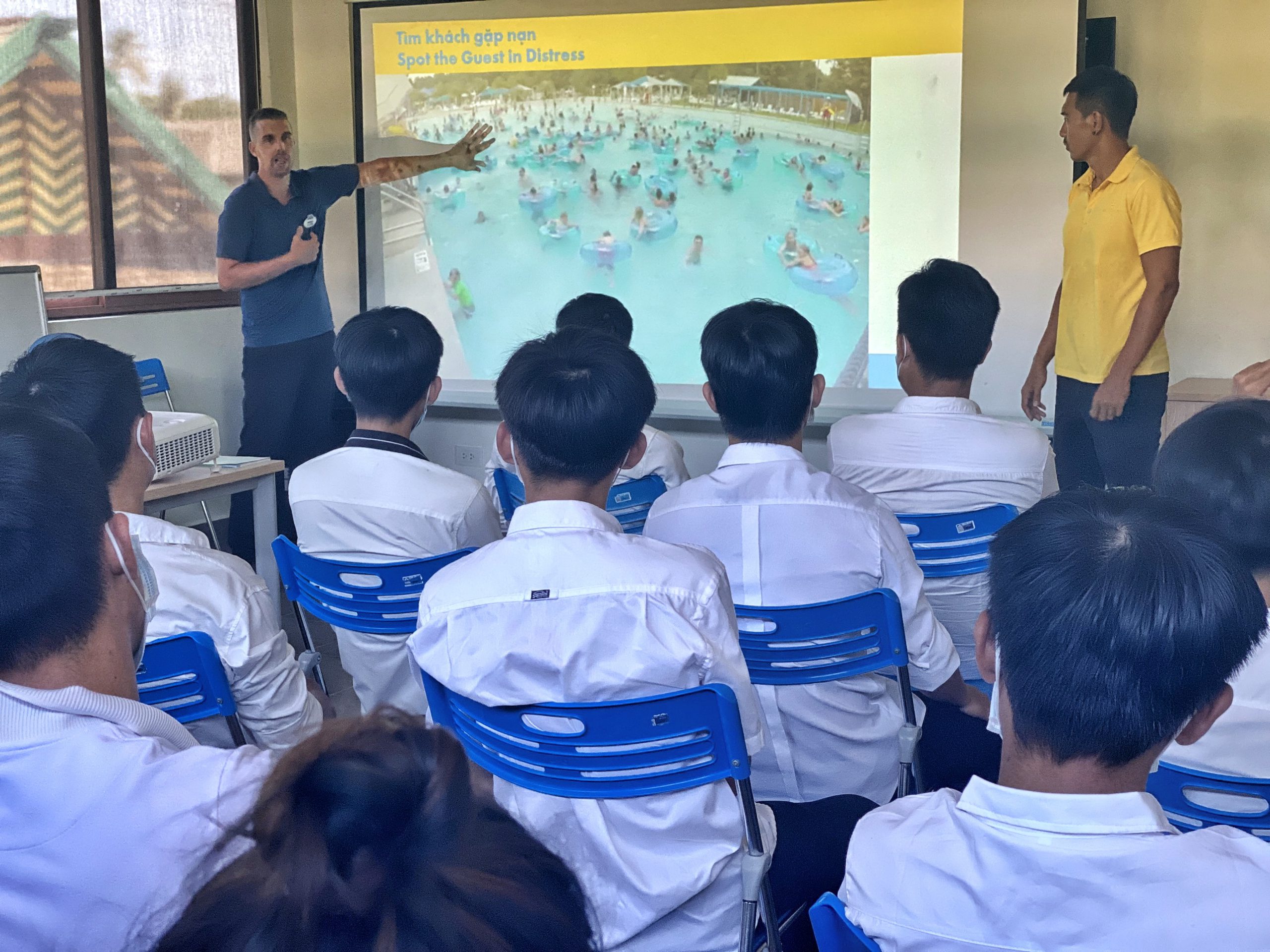
And so risk-taking is another one. And the way that they are able to communicate about failures, whether that is something that is being brought up or something that’s being hidden.
If somebody makes a mistake, do they go to the boss and say, hey, look, boss, I’m sorry, I messed up. This is the situation now. How can we fix it? And so you’ve got so many of these small cultural differences that when you understand them better, you can see why people do things.
An example like that is in my first month, I was told I needed to get somebody to repaint a side of a building. And I’m like, okay, who knows how to do this?
I was told this guy knows how to do it. Okay. So I get him, I’m like, hey, can you paint this? Can you paint this wall? He’s like, oh, yeah, okay.
Okay. I had a translator there. And so even the language barrier was something that we overcame. And he walks away, I’m assuming, to get the paint.
And I come back 10 minutes later and I see him painting. So I’m like, okay, we’re all good. And on my way home, at the end of the day, I see him, I’m like, oh, did you finish? Yeah, finished.
And so I come back the next day and the wall is only half painted. I spent an hour looking for this guy again, and I’m like, what happened? It’s half finished. Oh yeah, paint finish.
Okay. So we don’t have any more paint. What’s the problem? Oh, yeah. I don’t know where the paint is. Fine. Okay. I’ll go find out where the paint is.
So find more paint, bring it to the guy, tell him, finish this wall. So your goal is to finish this wall. If you’ve ran out of paint, then you tell me, and you make sure you finish this whole thing. Okay. End of the day, I see him again. He’s like, oh, yeah, finished. I’m like, finish paint or finish painting the wall. Yeah, finish painting the wall.
I’m like, ah, good. Okay. So I come back the next day and the whole bottom 10 centimeters of the wall, it’s not painted. Because what happened was that he literally painted over all the grass that was growing up to the side of the building.
And at night, the gardening guy came and he cut down all the grass. And so he never took the initiative to like, hey, let me actually move the grass to try to paint the house or tell the gardener, hey, cut this grass so that I can finish painting.
And so the way of thinking is not, okay, this is my goal and I have to achieve this goal. No. My goal is I do what the boss tells me. And this is how I understand it.
And so clarifying, checking, understanding what problems there are, and even if there are problems, right, would he have told me that, oh, this is a problem and we need to actually get the grass cut.
So it’s a very simple example of the way that culture influenced things, religion, location.
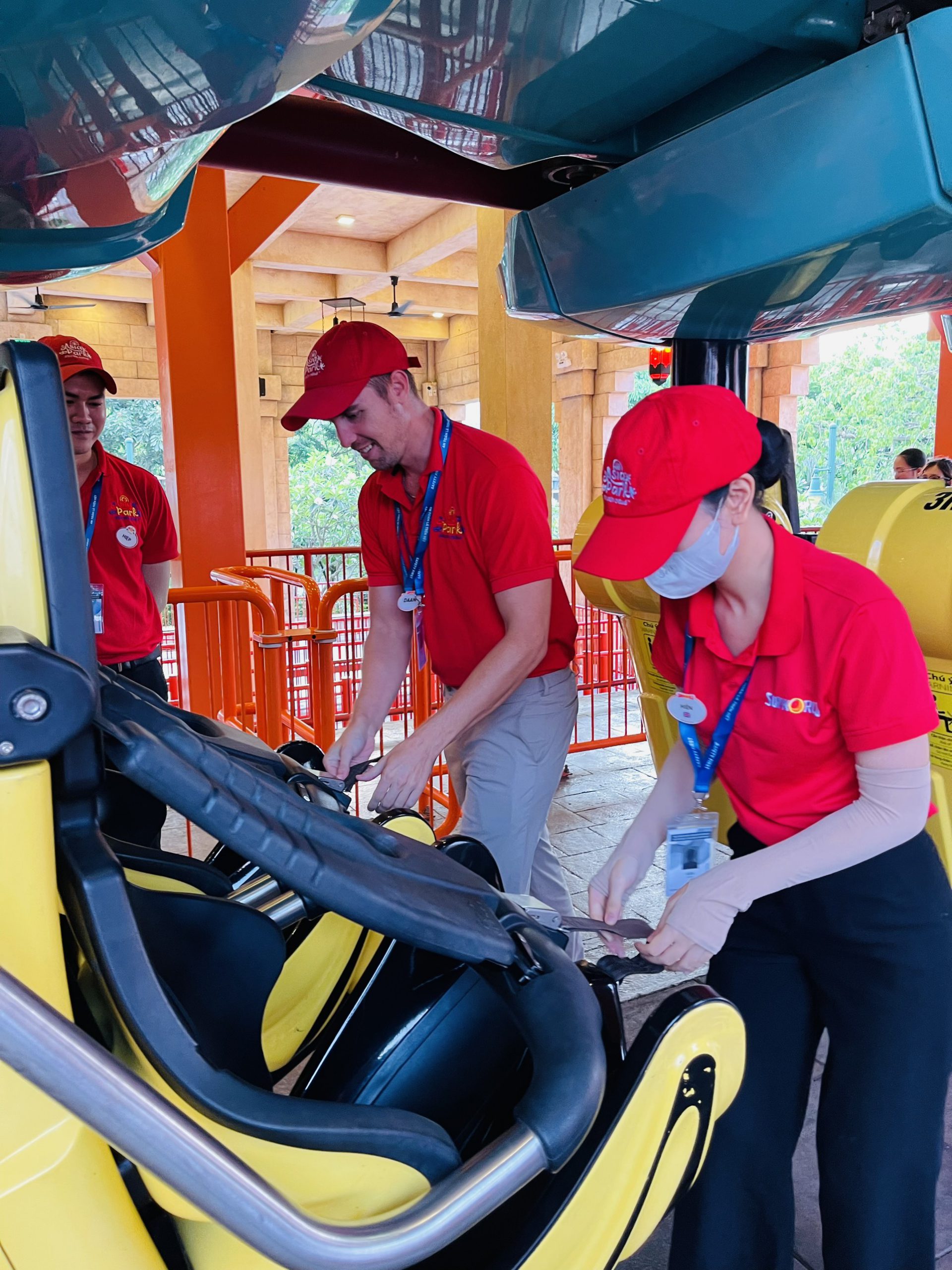
But in Vietnam, for example, also the fact that it’s a communist country. And that the way that they work is still very organized. And so the combination of trying to bring a form of capitalism into a communist country is really interesting to see.
I think that’s where you can see that the relationships and the connections that you have within the governments and within the region are so important that you have to make sure that you get everyone on board.
Everyone is again, at that group culture. But it’s also making sure that when you want to develop a project that the government actually supports that. And I think that a country like Vietnam is in a unique position because they’ve got one party government, so they’re able to make changes and rapid changes.
You could see that during covid. The government comes out. Just guess, do you know how many covid cases were in the country when they closed the borders, when they said no more international travel, we’re going to close the borders. How many cases were there in Vietnam?
Won: Single digits?
Daan: Two. There were two covid cases and they said, we’re closing the borders. I think the experience that they had before with SARS right in the region.
But that’s not a democratic decision where everyone has their input. And we only decide to do things until everyone agrees.
That is, look, this is going to be a problem. This is what we need to do. Everyone wear masks. And the whole country wore masks.
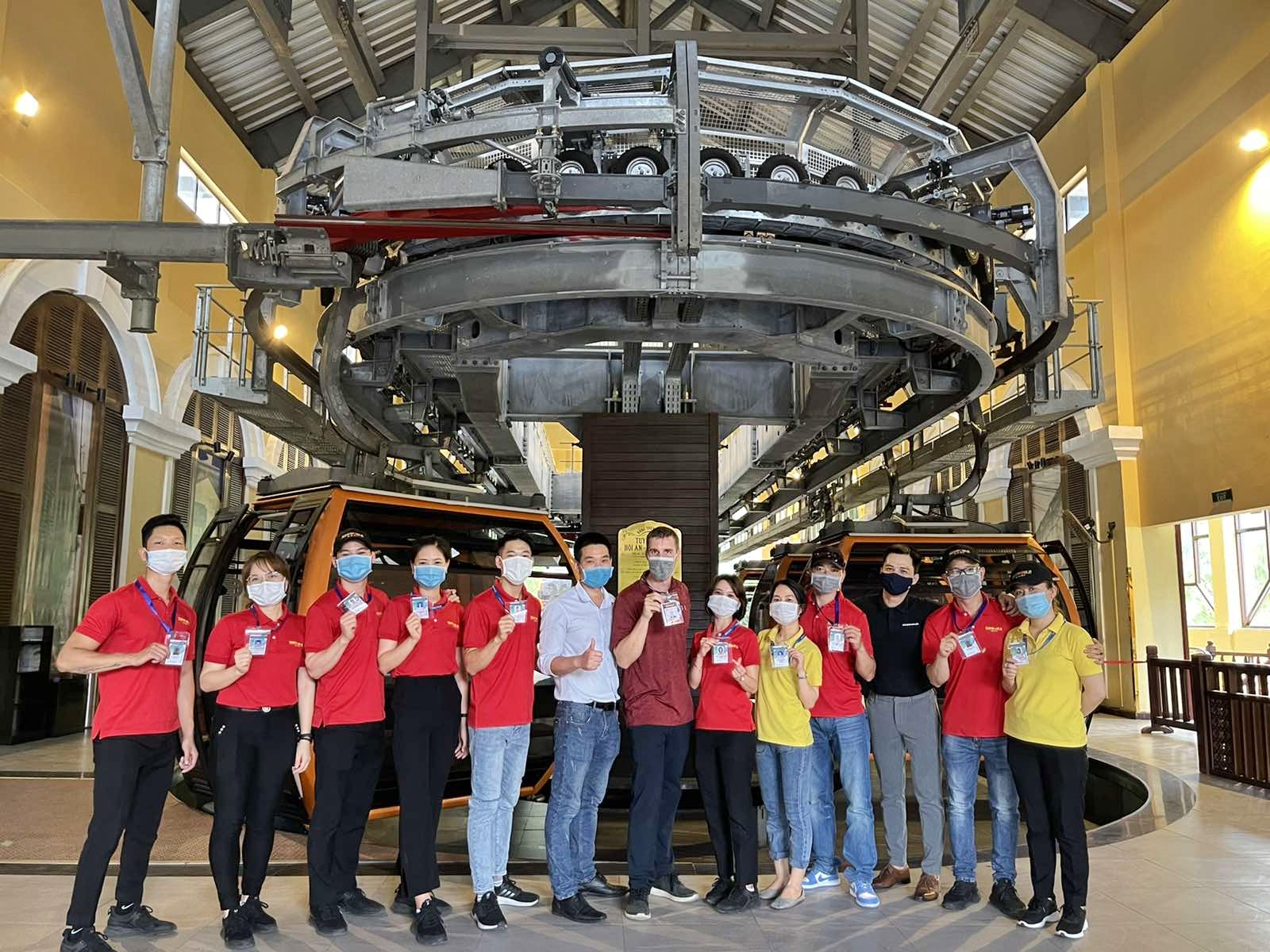
It was so fascinating to see a country like Holland, where I’m from, where everyone was arguing and worried about their freedoms and the infringement of the government.
Where here they’re like, the government knows what to do, they’re going to tell us. And so this is the information, this is what we need to do. And everyone wears masks.
And after about six months, there was no more covid in the country. And we had a great 2021, we reopened a park, and on the first day we had 13,000 visitors. Like, no other country was doing that.
And so Vietnam was in this unique situation because of everything, the way that they’re structured, the Vietnamese, it’s not only communism, but also I think the Vietnam War taught so many people a mindset of suffering and working incredibly hard. And as long as the goal is achieved then the suffering of individuals contributes to the larger overall goal. And that’s more important.
Won: Wow.
Daan: It’s small things, the amount, like how hard people work in construction, the fact that there’s so many women working everywhere.
Like in Malaysia, you can see people cutting grass on the side of the road. They’re all covered up because no one wants to be out in the sun.
And in Vietnam, half of them are women. And in other countries you would not see that because, ah, like this is really tough work. In construction, it’s the same, you see women carrying loads of bricks. It’s not that they’re doing paperwork, but they’re working equally as hard as the men.
And that is just, you can see why this country has both. So much potential, but it’s actually achieving those things.
Because it has a mindset of this is what we need to achieve. We wanna make Vietnam a really amazing country where we’d love to have tourists to come see our culture. And yeah, it’s just really shows the promise that Vietnam has.
Best Practices
Won: Yeah. That’s fascinating. So you’ve had experience across so many different types of attractions as well as functions. You’ve done development operations, it seems like you’ve done project management.
Do you have any best practices for each of those kind of categories, like what people do right or wrong, any lessons learned that you’d like to share?
Daan: Okay. Best practices. Okay, I think there’s, there’s so many facets that it’s tough to give sort of one or two key best practices.
But I think that when we break it down and you look at, for example, development, I think a best practice, a challenge that some parks face is that at first they don’t have the right base, they don’t have the right research to understand what is it that guests really want.
So for example, when you build an indoor theme park on a beautiful island that’s known for its culture, and its beaches, that’s going to be a tough thing to make work.
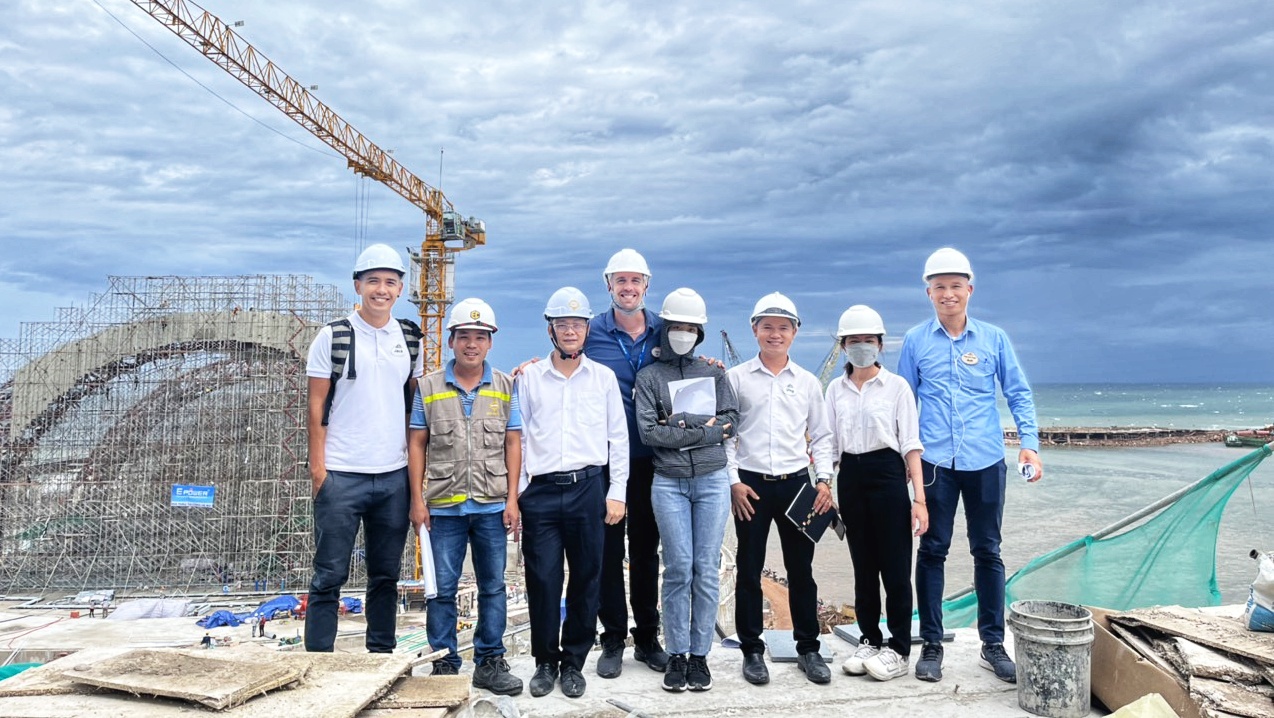
And if somebody says, oh, this is what I want, it’s still important to question that and to try to have more research behind it.
And that’s often what you can see from these family companies, especially in growing areas, because I don’t know if many people could explain or foresee the theme park industry, how it is now 10 years ago.
And so you have to sometimes rely on a vision that isn’t there. And so I think combining that beautiful vision of like, this is where I want it to be backed up with data. And to say, yeah, we want something like this, but will it actually be feasible? Does it match with what this place needs?
And I think Sun World does a great job with that, with these cable cars going to these unique destinations. So in development, I would say make sure that it’s well researched and that you understand that it’s actually going to be an added benefit.
And then having the right expertise in the development process is important. Somebody that is willing to say, hey, are you sure? Somebody that is willing to question things.
And in Asia, you often have to do that in a subtle way. You cannot do that directly to the chairman or in front of a group. Right. But I’ve been in all these companies and there is always a few people who have the trust, their senior in the company, that find the right time and place to have another chat and to change somebody’s mind for the better.
And so yeah, I think from a development side, that is really a key. Then when you move from development to operation in a pre-opening stage, I’ve seen a few failures where the drive to open was more important than opening well.
And so when you open up a park that isn’t sufficiently ready, and what I mean by that is that the experience is good for the guests. You might not have the full park open. I’m not saying don’t open until it’s perfect. But there has to be a baseline where people say, oh, wow, I’m having an enjoyable experience. I don’t feel like there’s something missing.
Because when you open up a park too quick, just because you have your other stakeholders or you’ve committed to deadlines, that can ruin you for a long time.
It’s very hard to overcome those first group of people that come in the first six months that really are going to be the first ones that get excited about your park, that talk about it.
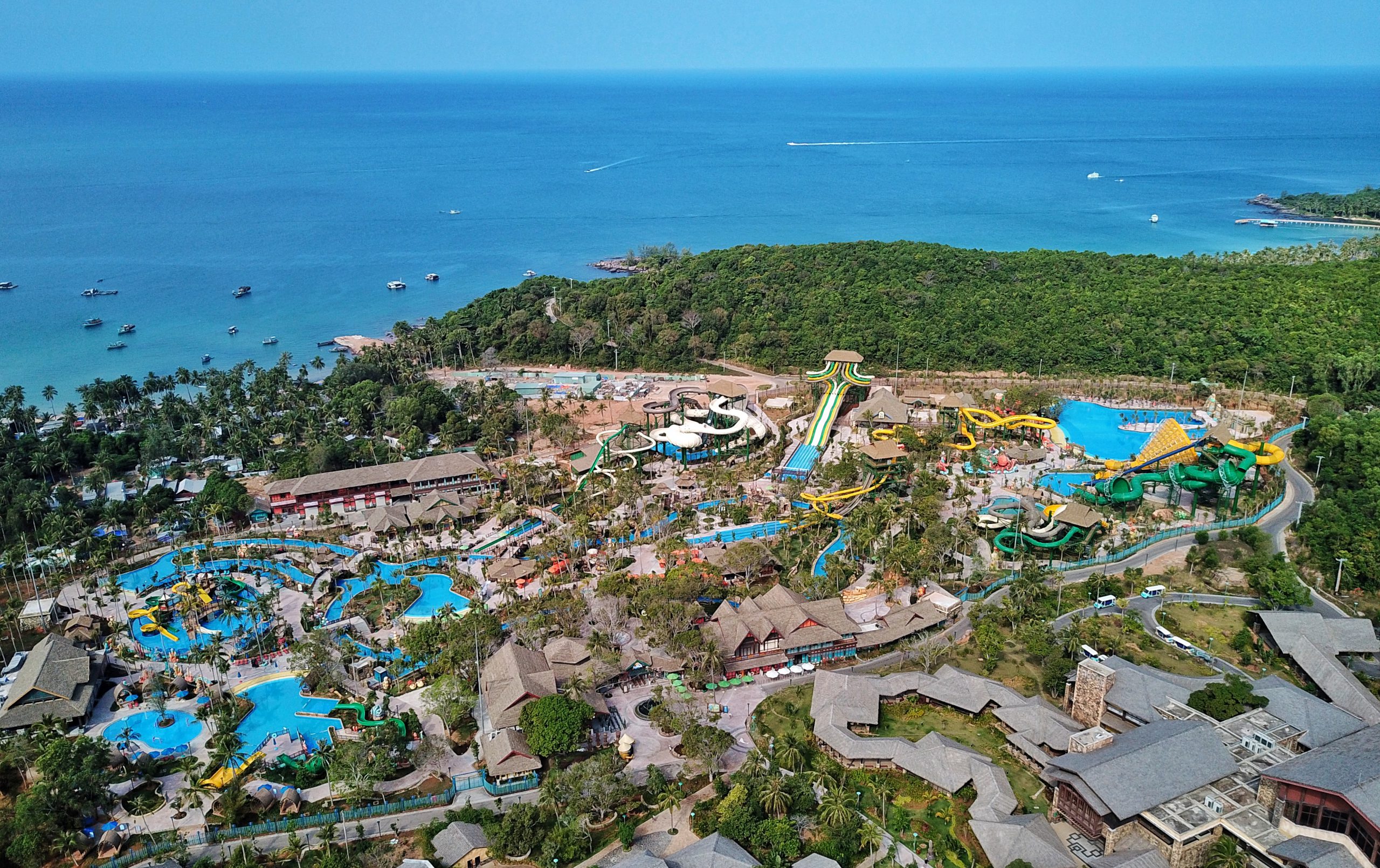
If their experience is not good, to then try to fix it because six months later you did get your key attraction open, and a year later you’ve got everything open.
People will look back on those first few months and their first visit. As you know, a theme park is not something that people come to regularly, like a supermarket and they can see, oh, it’s getting better. We’ve got more offerings. It’s actually now the experience is good.
No, you do that very scarcely. And so you really struggle if you open up too quickly.
And then hiring the right people is also very important in that pre-opening stage. And that both works from an expertise standpoint, but also from a mentality standpoint.
We had a big show, outdoor multimedia show that we had to open. And this was at the same property where we already opened up a wooden coaster, a waterpark, where in all of those situations, especially the first project for the waterpark, we had this vision of finding people with the right experience.
We were looking and saying, okay, who else has experience to open up, like to work in a water park? Almost no one. And there wasn’t a budget to bring in foreign expertise or to go outside of the country.
And so we tried to get related industry experience, somebody with large pools in a hotel. And we thought that that would be the best way.
I arrived there and I was told, oh, there’s also somebody else that’s starting. And my first week, the maintenance manager of the park is starting. And so catch up with him, see if he’s okay. And so I had time around 11:00 AM in the morning, and I called him and no response. He called me back at 2:00 PM.
He said, oh, I’ve quit already. I’m back in the city. And so I met up with him at the night, and he just was completely overwhelmed by the amount of things that he had to do, because yes, he’d been operating pools before, but never opened up a park, never been a part of, everything was under construction.
Everywhere was chaos. Everyone was just trying to get their job done. And so we really underestimated the ability for people, not just to know what they’re doing, but also the ability to get things done.
And with the show four years later, we really looked at, okay, we is this person’s personality. And not only, okay, maybe they don’t know what they’re doing a hundred percent, they’ve never worked at this level.
But do they have the resilience, the creative thinking, the problem solving to make this work? Will they fit in well within the team?
And when you don’t have the luxury of finding people that have experience, that becomes so much more important. And really a big learning here. And most of those people, they’ve stayed and they’ve done really well. There’s been maybe one out of the 20 that we had to, maybe two. Two out of 20 that we had to say, I’m sorry. This is not going to work. We need to demote you.
Or you should find another place somewhere else. But the majority of people, they were very successful and they lived up to the challenge.
Training Best Practices
Won: Yeah. Nice. That’s one of the things that seems to me like the most daunting, especially when you open up a park in the middle of a market that has never had a theme park before. So how do you kind of overcome that and address that challenge?
In terms of educating, some of the workers might not have ever been to a theme park before either. And so how are you instilling this whole notion of the guest experience and what you’re trying to translate in terms of the vision, the guest experience into the workers, the staff?
Daan: Well, it’s a good question. And I think the answer is with great struggles. That’s exactly what we had to do almost at every project. And I think the wooden rollercoaster was the best example. Every single staff member that we trained on that thing had never been on a rollercoaster and seen a rollercoaster before, like in real time.
Like, not that they were like, oh, this is scary, I don’t wanna go on that. No, they’ve never been into a theme park where they, they’ve been or actually saw rollercoaster in real life.
Like they’ve seen it on pictures, like they heard about what it is. Right?
And so I think a few things that have to be done simultaneously is one, to break down the information so that it’s easily understood. And so we had started here, which unfortunately I think you have to do with SOPs.
SOPs that were multiple pages long, some 20, 30, 40, 50 pages of how to operate theme parks that you have to have fencing, that you have to check lap bars, right?
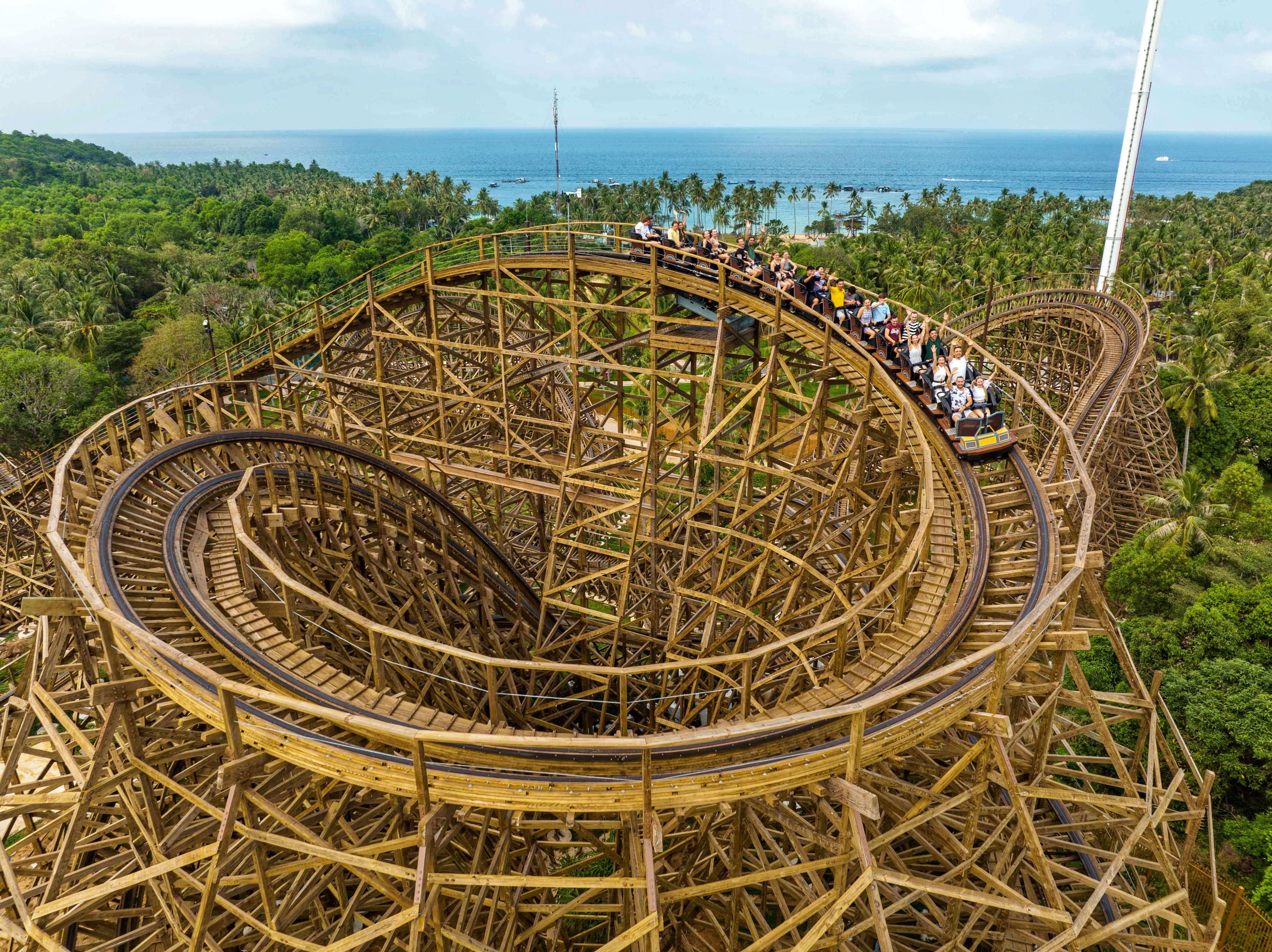
And all of those things that were all written down. And the Vietnamese culture then unfortunately lays over a format and a level of complexity that fits within the approval process, right?
Because in other countries, Malaysia and Indonesia, as long as it works, the format is not really that important because that’s up to the company to decide.
And there’s no like government format for theme park attraction SOPs, right?
But here in Vietnam, there are formats to get things approved. And so the way that SOPs here often work if you don’t push for it, is quite complicated. And so you have to make sure that you are able to translate those full procedures into things that are easily understood.
So this is, for example, the handbooks that we’ve been making, that’s been a massive jump up in quality because we’re now able to teach people and we’re now able to delegate that teaching to the team.
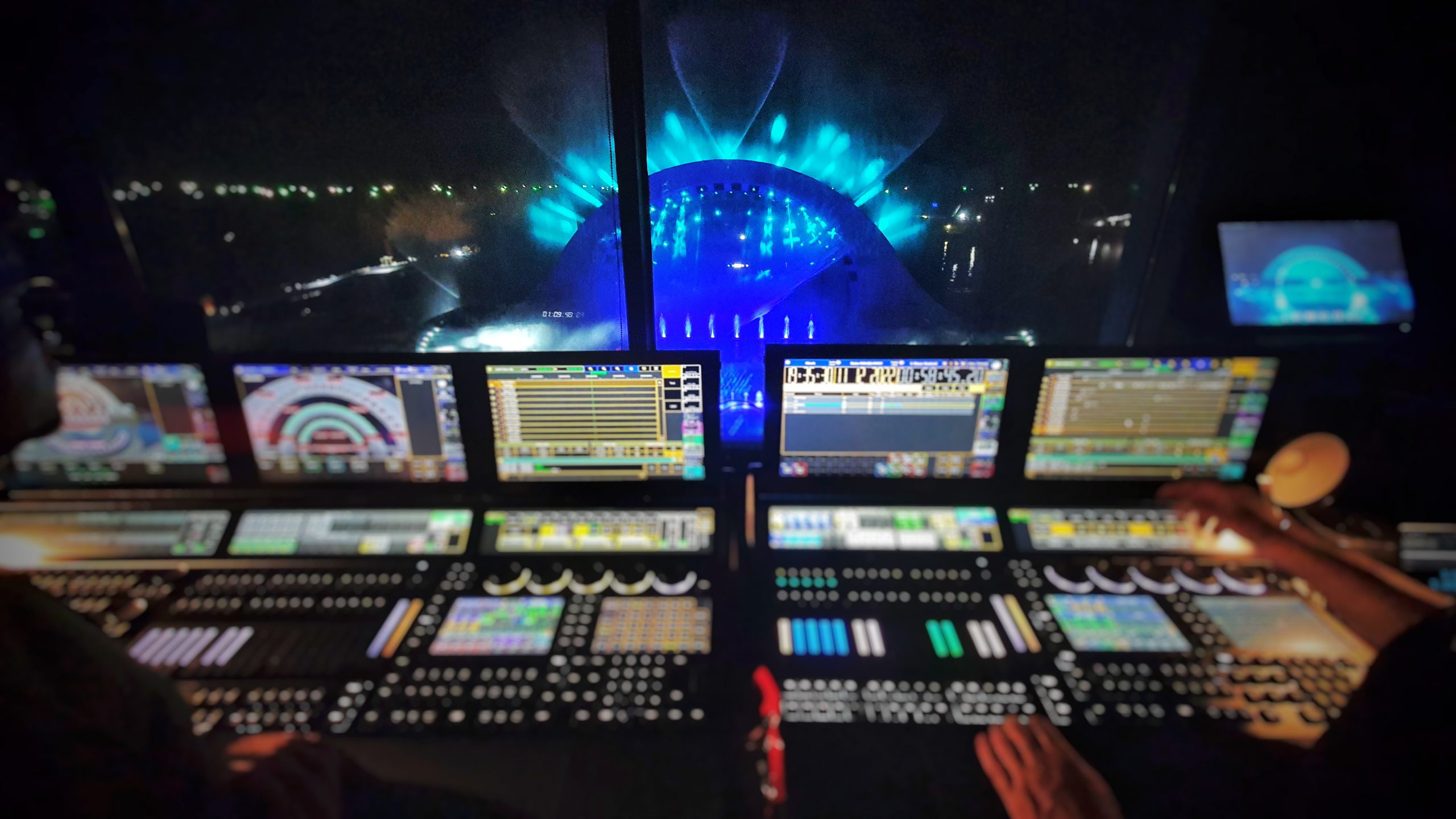
That when you come on board, the first thing that we do now is proper introductions.
And this is something that every established park does, but I think the next level that we bring into that is we start with an introduction to the industry.
So this is literally explaining, these are the different theme parks. Actually, you can have a career in this field too, right? You can move from attractions to F&B because for many people, this is what you could see in Malaysia, it’s a job.
And an example in Malaysia was that after you could see the sick leave increase by a significant amount, the day after salary got paid. The day after salary got paid, there would be a significant jump in sick leave.
And so that’s literally because the money is in, I don’t need to work anymore. And then when you speak to somebody who’s just been away for five days and they’re back, and you’re like, what happened?
Oh yeah, I had to take care of my family, I had to like do this, do that, and now I need money again. Work money is very different from career that happens to give you also money. And so trying to establish that is important.
And then really making those big procedures easy to understand. So you move from, we do an introduction to the group, to the park, and then an introduction to the industry to say, this is what you’re a part of. And then you move from the industry into the specific department.
And then you cover all the things that are consistent between those consistent between the different jobs within the department.
Because if you look at, for example aquatics, you have lifeguards and dispatchers. For attractions, you’ve got attraction operators, loaders, ERs, you’ve got all of these job functions that go within the attractions department.
But you’ve got things that are important for everyone, right. How to greet the guests, what to do if there is an incident that happens. What are the different emergency stops, when to press what those key principles they apply to multiple job positions within a department.
And so you break it down and we break that down with a very nice little booklet with icons, dual language and English, and in Vietnamese that also helps to develop the language. And then that’s what you do for the staff level.
And then you really try to get the management to read through the full SOP so that they understand not just how to manage the business, but why. The difference, I think in the West also compared to some Asian cultures. And the way that they manage things, especially if you have very little time, is you don’t get to spend much time on the why.
I’d love to spend time on like, ah, this is how to check a lap bar, why is this so important? Very often here, you don’t have either the resources, the time, the people to explain that properly.
But also it’s not always something that people are looking for. And sometimes by giving them the why and giving them options – like, why should we check lap bars?
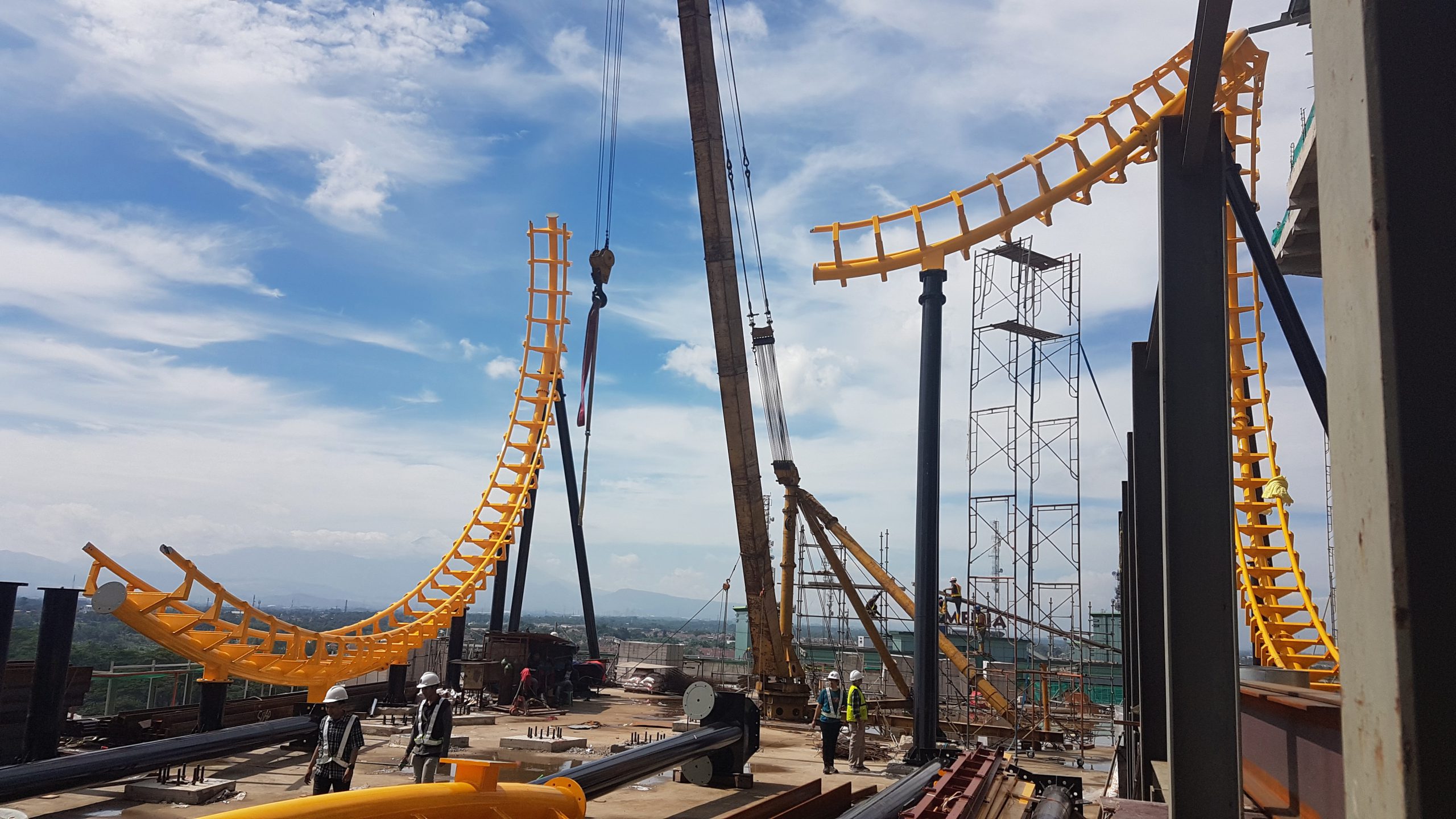
And actually there’s a few different ways you can do it. All of those choices we remove when we do a setup for a new project and for a country that doesn’t have that experience. And that means that there’s only one way to stop, there’s one way to check, there’s no differences. And that it’s not perfect.
But that we have procedures that work for 80, 90% of the cases it’s the same, and it might not be the most efficient, but it’s consistent throughout the group. And it’s consistent within these different positions that it means that people don’t have to think, what should I do in this situation?
Because actually years ago in school, the way that some people were brought up is that in school, it’s exactly the same. You read from the book and you literally repeat back what’s in the book.
Whereas in the west, you are taught the book is sort of like your guideline. This is the source material. And when you’re in university, you actually learn, okay, we should do problem solving.
Actually, there might be multiple ways of doing things. I had a teacher in university that didn’t grade, based on your knowledge, it graded based on your development.
So he did a test at the beginning of the year, and a test at the end of the year. And your grade was made up of how well you developed. And there were multiple choices. And the last multiple choice was fill out your own answer. If you think you have a better way, then you fill that in.
And if the answer was reasonable, he would see that as a correct answer. And so that really helps you to develop a different way of thinking. But we’re not always in a luxury position to do that with the staff. And we try to give that mindset to the managers, the supervisors, and so to help them understand why and when you can make decisions.
So every one of our staff gets to say, we’re going to close this at any one point no issue there. You can press the emergency stop all stopping, anyone can do it.
But restarting of the ride must be done by a supervisor. If any point in the checklist isn’t correct, we don’t have checklists that say, oh, if this is not correct, for example, the music doesn’t function, it’s not the staff decision to say, oh, this is probably safe, so we’re still going to operate.
One of the seats out of the 20 seats is not working correctly. That will never be a staff decision here at this point that a staff gets to make and say, this is probably safe. That goes up to a higher level that we then train to a higher level.
Sun World Sam Son
Won: I see. The training process is probably getting easier now with Sun Group having more parks, in terms of the SOPs. And so to that end I had the impression that you opened one of the Sun Group parks and worked on it from the ground up.
Could you talk about that experience and what that was like, was that kind of like the culminating experience at Sun Group for you?
Daan: It’s sort of both. Because when I came here, I was thrown straight into the opening of Aquatopia waterpark, which was the second waterpark of the group.
A really large, beautifully well-designed park where my boss worked on the design and development because he started a year before I came.
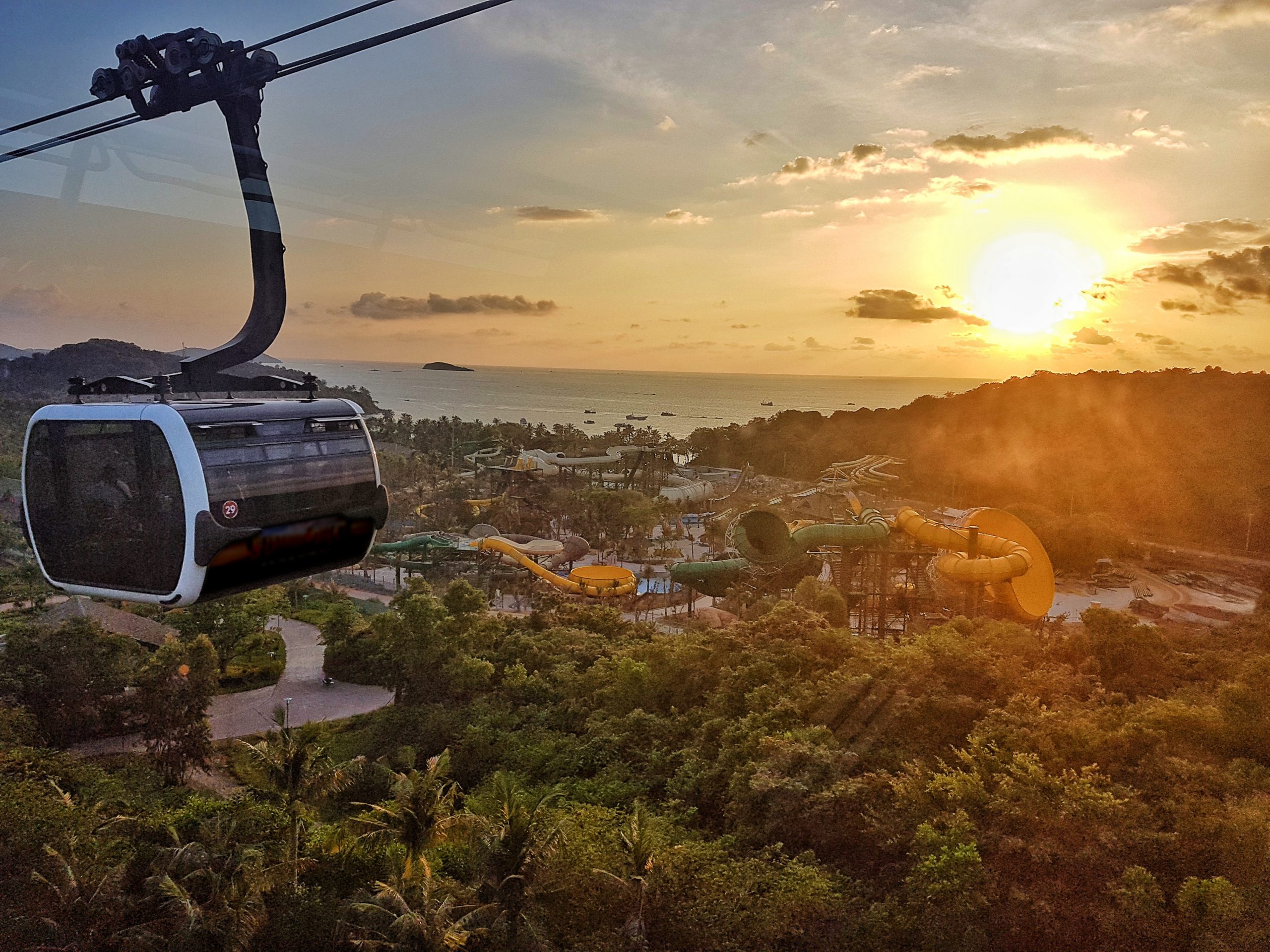
So I really jumped in to try to make everything work because things like the signage, there was signage design done, but the location of that signage was put in based on theoretical locations.
And the landscape design wasn’t coordinated with the signage design. So some of the signage was literally planted right behind a tree.
So it’s spending a day or actually multiple days to walk around and say, okay, change this signage here.
This signage, it’s missing a back, this signage needs to be flipped. This needs to be moved. So that was very practical, like setting up and opening.
And now our last project that I’ve been working on here, the current project is a waterpark, a theme park, and an RD&E area in a place called Sam Son.
It’s really got a large park that will open in multiple phases. The waterpark will likely open first with beautiful design. We’re moving away from a European theme and moving more into the authentic Vietnamese story. So this is based on one of the cultures in Vietnam, the Hmong people and really trying to bring sort of animals and stories from that culture to life to bring the Vietnamese not just an experience that is away from Vietnam, but to highlight the beauty of Vietnam.
So, yeah, for the last year and a half we’ve been involved in the development of that. And that goes from my boss first making a rough bubble diagram to say, okay, this is where I think the entry should go, and this is where I think the wave pool should go.
Then communicating that with the master planner and the designers to say, okay, how do we then shape this?
Then it coming back to us and me and my boss saying, okay, what is the feedback? Or we should change this.
This needs to be bigger, this should have multiple levels. And really like change, developing that master plan throughout. And then based on that master plan saying, okay, we’re now going to move into the schematic design concept, and based on that schematic design, we’ll need to start working on our operational things.
So that is figuring out roughly how much staff we need. What are these key functions that we need? What is the organization chart? When are we going to bring these people in? What are they going to need in order to do their job?
So your operational supply and equipment list, which is a list of a thousand plus, I think it’s more than 2000 items for the Sam Son parks. That will all need to be purchased defining if it comes from overseas or if we can find it locally.
Because if it comes from overseas, there’s a different department that’s involved and it also takes longer, if there’s any repeat orders that need to be done so that we can also manage the budget for next year, we know how much we’re spending in pre-opening and also how much we’re expected to spend in the first year.
And so that park is currently under construction in the north. And so that’s a great way. That’s really great because it sort of completes the circle that I started from opening in Aquatopia four years ago to now hopefully in next year, I hope, that Sun World will continue to open that park.
Won: What is the park called?
Daan: All of the Sun World Parks, they’ve changed their names now to just have the Sun World and then the location, so it’s going to be called Sun World Sam Son.
But sort of the challenges that we face, especially when we were a few years ago, when they’re rebranding all of the parks, is that when you’ve got multiple parks, it’s really hard to come up with a good name for that.
If you’ve got a theme park, a water park, and an RD&E area, what do you call that? An entertainment destination, a complex?
Won: Resort?
Daan: Yeah, a resort. But the challenge that there is that it’s not really part of a resort. And if it’s landlocked, it’s harder to call it a resort.
Yeah, I think that’s an interesting challenge. And so the name is just going to be called Sun Worlds Sam Son at the moment, and then each park is going to have their own name.
So that is at the moment still confidential, but each park is going to have their own theme name, and so the complex is going to be Sun World Sam Son, and then you go into the theme park or the water park, and that will be heavily themed and all will have their own their own name. So these individual parks will have a name.
Won: Any new or memorable attractions or experiences that’ll be part of that complex that you could tease out or mention?
Daan: Well, I know there’s going to be definitely some attractions that are going to be both Vietnam’s first and both Asia first. I think for the theme park, I might not be able to say, I’m not going to be able to say what is coming there. But the waterpark will definitely have some Asia first attractions.
Visit Recommendations
Won: Nice. Okay. So as part of that, just curious, like out of all the Sun World destinations are there any in particular that you especially recommend?
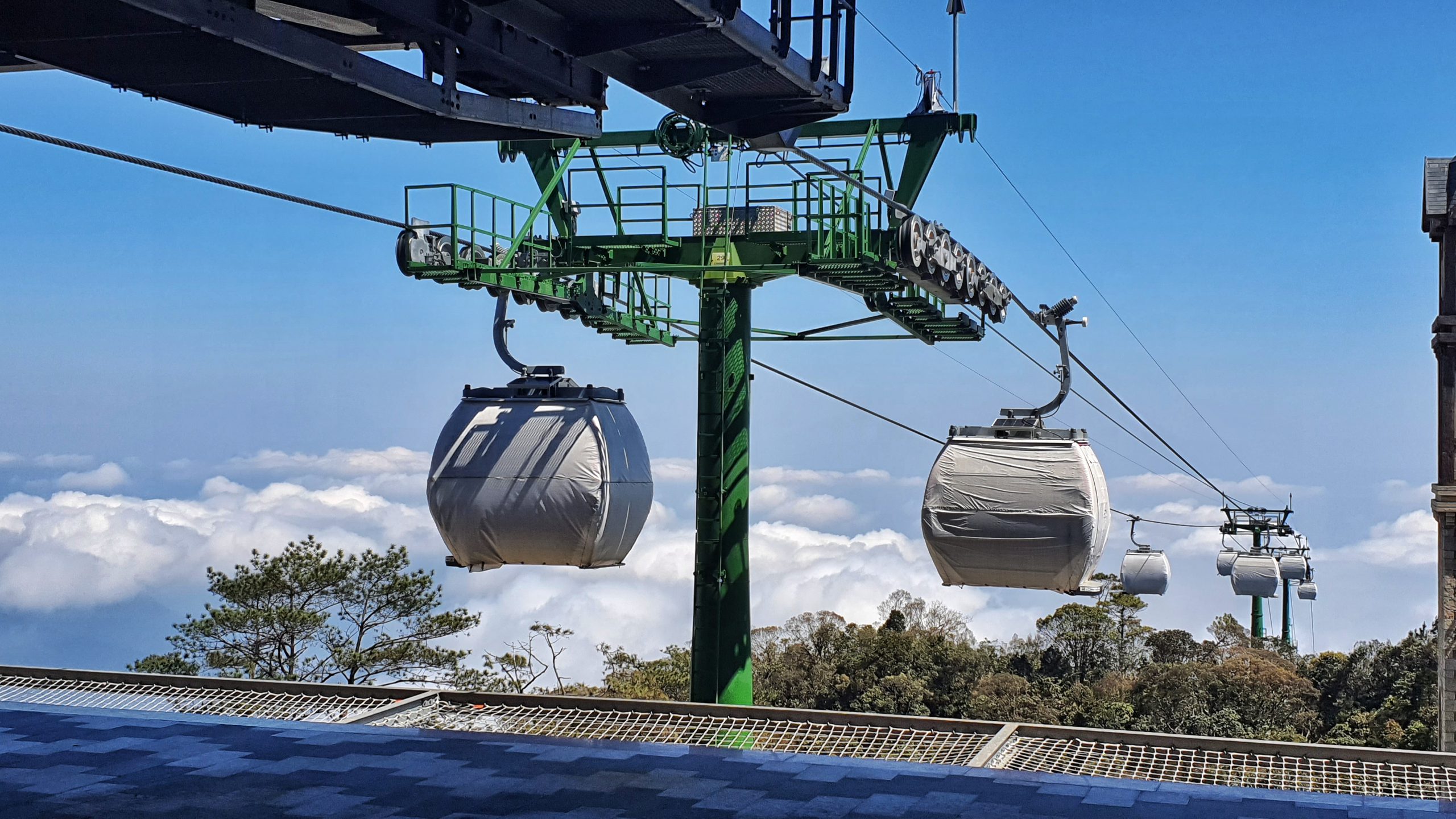
Daan: I think Bana Hills just because of the uniqueness, earlier this year, we were able to bring a large group from IAAPA, about a hundred different industry experts over to Bana Hills.
And for the people who hadn’t been, they were just shocked at what there was. And for the people who had been, it was a few years ago, and they were like, oh, wow, it’s really evolving.
And it’s really coming more together as part of a themed experience. Where before there was more of a combination of a few different things.
We’re really trying to streamline both the story and the attractions experience that we offer. And there’s six cable cars that go to the top. There’s, on an average day, often more than 10,000 people on a daily basis that visit that park.
It’s a really unique destination. And it shows what Vietnam can do and can offer, knowing that creating this type of destination would be almost impossible for many other countries around the world to do this in a western country.
It would just be cost prohibitive. And so I think that gives great pride to show these wonderful projects.
I think our group is the one with the most cable cars of any company in the world. And that is a cool thing too.
And so the second park that I would recommend is probably Phu Quoc because you enter to the south of the island into an old Roman-inspired station building that has these giant stone gladiators in front of it. You go onto a cable car, the longest sea crossing cable car over beautiful blue tropical water into again, another tropical islands that you can see a waterpark and you can see sort of hidden behind the jungle and all of the landscaping, a wooden rollercoaster that goes through.
I think that arrival experience, and then when you actually do these experiences, just very impressive. And that really gives you, I think two beautiful places to visit.
Why Cable Cars?
Won: Yeah. I’d love to see them. I’ve seen pictures. Stunning. So, actually about the cable cars, was that like a deliberate decision on the part of the chairman to say that we’re going to specialize in cable cars?
How did that come about, is it just maybe like a function of the topography of the sites that he selected that brought that about, but it’s just very fascinating to me.
Daan: Well, I think it probably started with Bana Hills and the fact that there was a cable car and there was an intention of developing that region.
And when you look at the mountains and you don’t want to actually destroy the mountains, that’s a big thing here where we have to be really sensitive about the nature and the beautiful locations that Sun World is in, is that you don’t have a lot of other options.
Because you don’t wanna go through the jungle.
And in places like Phu Quoc, where you have to see the capacities that you would have to do by boats would just be very tough.
And looking at parks where, for example, in Nha Trang, the cable car has been down for a few months there for maintenance, the experience to go to an island by boat is just a lot less convenient.
You still have to queue, you still have the same capacity challenges that you would have with a cable car. But your experience of looking out of a little window while the boat moves up and down and you can’t run with high waves. It’s not ideal.
And I think that they’ve been continuing to have cable cars because of two things. One is the topography, like you said, it’s a great way to bridge difficult terrain like water and mountains.
And I think the second thing is that it’s both a transportation and an attraction. You look at the view from those cable cars, and they’re all stunning. It’s an attraction on its own.
The example in Sa Pa stands out for that. That is the highest mountain in Vietnam. You’re surrounded by all these beautiful rice patties.
And the first thing when you go outside of the station, you go over a valley, and that valley is 180 meters deep. So you go into this beautiful Vietnamese rice paddy valley, and you’re 180 meters above the ground level.
And then you go up, right? You go up quite strongly. Then you move into the clouds. Because it’s at cloud level there.
And so it becomes completely white. And then if you’re, most people are lucky, then the cloud level opens back up and you see the top of this beautiful mountain. You see a few temples that are scattered on the mountain tops.
You see a little beautiful themed funicular train and a Buddha statue. And you’re like, oh, wow.
And then when you get there, you look out and you see this beautiful landscape mountain. And so it’s as much the experience on the cable car as when you get off, that is beautiful.
Won: Right. Yeah. Cable cars are very unique in that. It’s about the journey, that is the experience.
Daan: Especially here, right. Because you could see places like Europe and even South America, they have some cable cars, but it’s really transportation there.
Like, you go above this city. Yeah, but I think here we’ve got luck that we live in a beautiful, Vietnam’s a beautiful country with a lot of nature.
Visit Recommendations – Vietnam
Won: Yeah. I was actually thinking we should have talked about this, like the fun stuff first. But I’m curious, you’re a Vietnam veteran and this is not really talking about themed attractions, but are there any things, experiences, restaurants, anything in Vietnam that you would recommend for a first time visitor?
I’ve been there, but just anything from your experiences that you would recommend to our viewers, I guess?
Daan: Well, I think that there’s just, it’s so tough to give a few points because there’s so much.
And I think it’s important to take it all in and to try to do the authentic experiences.
What I mean with that is that oftentimes the best banh mi, like the sandwiches that often have like roast pork in them or different types of meats and vegetables, they’re the best from the lady at the corner on the street that your hotel receptionist knows and says, oh, this is my favorite in the whole city compared to the shop that also sells them and says they have the best ones.
I really personally enjoy to go to a beach that doesn’t have a five star resort on it. Right? And to take a little boat that you’re wondering if you’re actually going to make it there, but brings you to this beautiful place that only the local fishermen know.
And then they will say, oh, what do you wanna have? Well, we’ll buy it at the local market and we’ll cook it for you. And you can do that very low budget, but you can also have an authentic experience that is really beautiful.
In Phu Quoc, there’s a small little resort on an island run by a local family. And that’s what they do. They’ve got these over the water villas. They’ve got a bunch of dogs running around and you just have this beautiful beach and there’s nothing else there. You just go there to relax.
You stay in this beautiful place, and it’s relatively affordable, and they’re just happy to have you there. And they’re happy to make whatever food you want. And yeah, I think that’s a really cool thing.
So to summarize, I think food-wise banh mi is always my favorite as a good way to get started. I think the second thing would be the regional dishes. So Vietnam, everyone thinks of the same things, banh mi, maybe bun cha and those types of things.
But actually, each region has their own specialty. The food in the north is quite different from the food in the South. And so if you’re able to visit multiple places, not just take the general best Vietnamese things that I just mentioned, but also go to Hanoi and say, okay, what is unique in Hanoi that I can’t find anywhere else or is harder to find? And then you get some really cool things that are really regional instead of just countrywide.
Authenticity
Won: I meant to ask you this earlier, but when you say theme park or waterpark, it brings up like a certain image to mind, but of course there’s got to be regional differences and local differences in how the attractions are executed and how the guest experience is presented. Do you see that in Vietnam with your parks and like, if so, what are those differences?
Daan: Well, I see now something that I hinted at before is that I think it’s very important now to switch towards more authentic experiences and really bring out what makes Vietnam unique.
Whether you do that in the theming or in the hospitality, I think it’s important to leave now this tradition of saying, what do they have in other countries? And let’s try to bring that to Vietnam.
Instead of that, now it’s important to say, what do we have in Vietnam that will make this experience unique. And that is both from the resorts, but also our parks.
And there are a few smaller operational differences in the way that people work, for example the fact that family is so important here, that they’re often a bit larger groups that come and visit that has some operational impacts here in Asia, oftentimes people don’t like to be out in the sun.
It’s less important here in Vietnam than in Indonesia and Malaysia, for example. You can even see in Malaysia the difference between different groups of people like the Malays, the Indians and the Chinese in regards to how okay they are with being outside under the sun.
But yeah, that’s the challenge in a waterpark. And something that we’ve noticed that might be attributed to a bit of marketing as well, is that not everyone who goes to the waterpark actually goes on the waterpark attractions. It’s very interesting. I don’t have hard data.
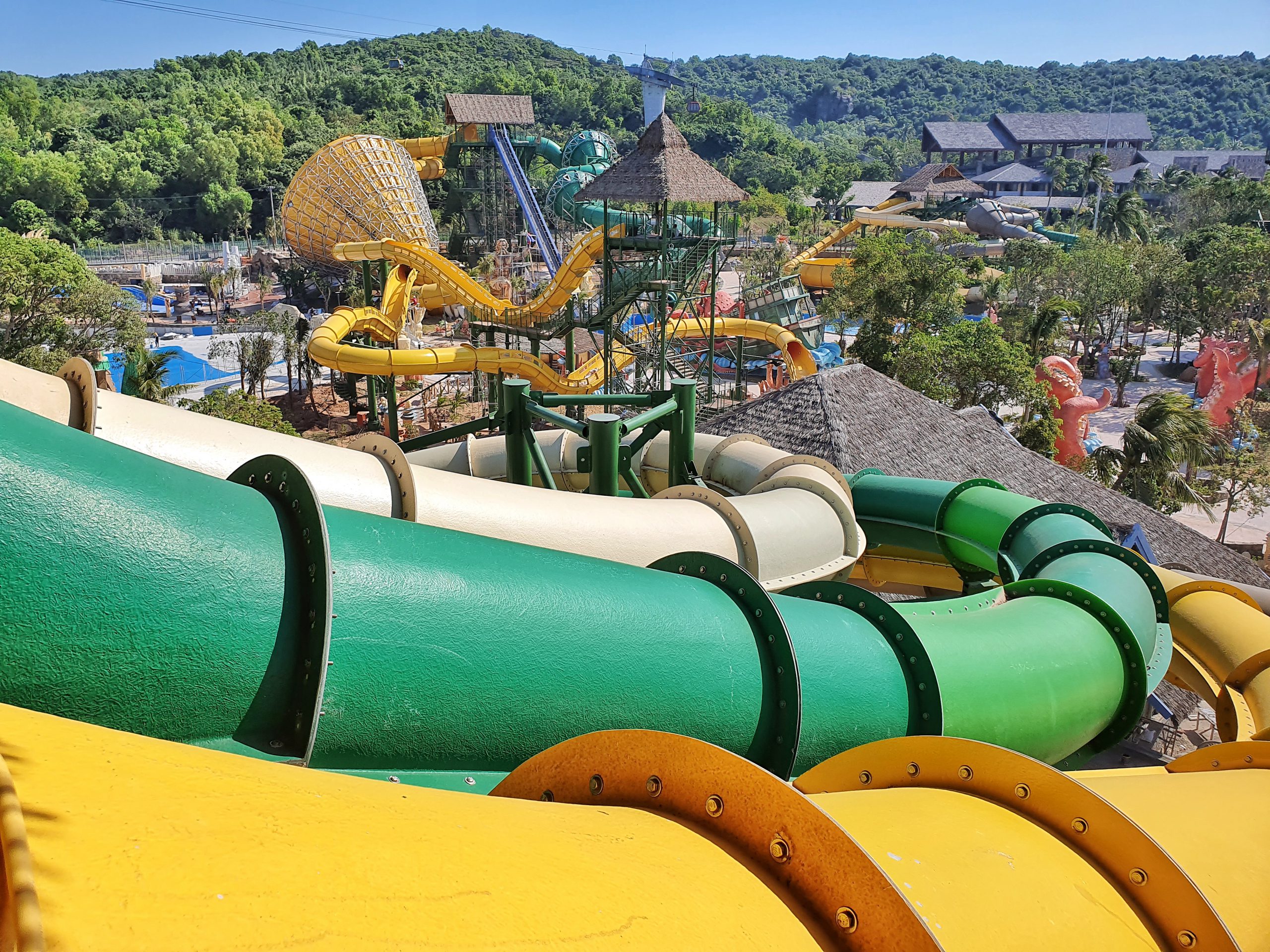
But I’d love to see the difference between Europe and a country like this on the amount of people that says, I went there and I didn’t get wet. Which I think because some people take their elderly family with them, like it’s a three generation family, the kids, the parents, and the grandma and grandpa, and you always see at the corner, usually under the shade on their palm tree or under an umbrella, you see grandma and grandpa sitting like enjoying a coffee while they’re safeguarding the belongings of the family.
And the kids have gone out to play. And so we see that a lot in combination with the fact that theming here is so important. And people, even if they don’t do the attraction, they’re still happy with the experience by just walking around and seeing everything and taking pictures.
And so the expectation that the guest has, if I see some water parks in the US there, water parks, like there are concrete slabs, there’s some holes where the pools are, there’s some slides and that’s it.
And in Vietnam, there would just be no way you can compete with that because it completely lacks the beauty and the picture opportunities that I think Asia now is getting known for, but especially here in Vietnam.
I think that also has consequences on future entries. That I think there’s still an opportunity for something IP-based. But it’s going to be hard to just do a basic waterpark just because there is so much competition that is on a higher level, and people go for that. It’s not just the rights. It’s that storytelling, the beauty of the landscaping, that really plays a part in the experience of the guests.
Levels of Excellence
Won: Do you see any experiences in Vietnam where that has been executed very well? You mentioned the local stories and legends and the traditional kind of themes, well, I know that you mentioned that Sun Group’s latest is coming out with that, but are there any others that have seemed to execute that very well?
Daan: I think there’s a lot of opportunity still for parks to do that. Recently there was a water park in the north that opened based on traditional Vietnamese legends.
And they’ve got some theming elements that I think would be attractive to the Vietnamese. But, in my opinion, it wasn’t consistently executed.
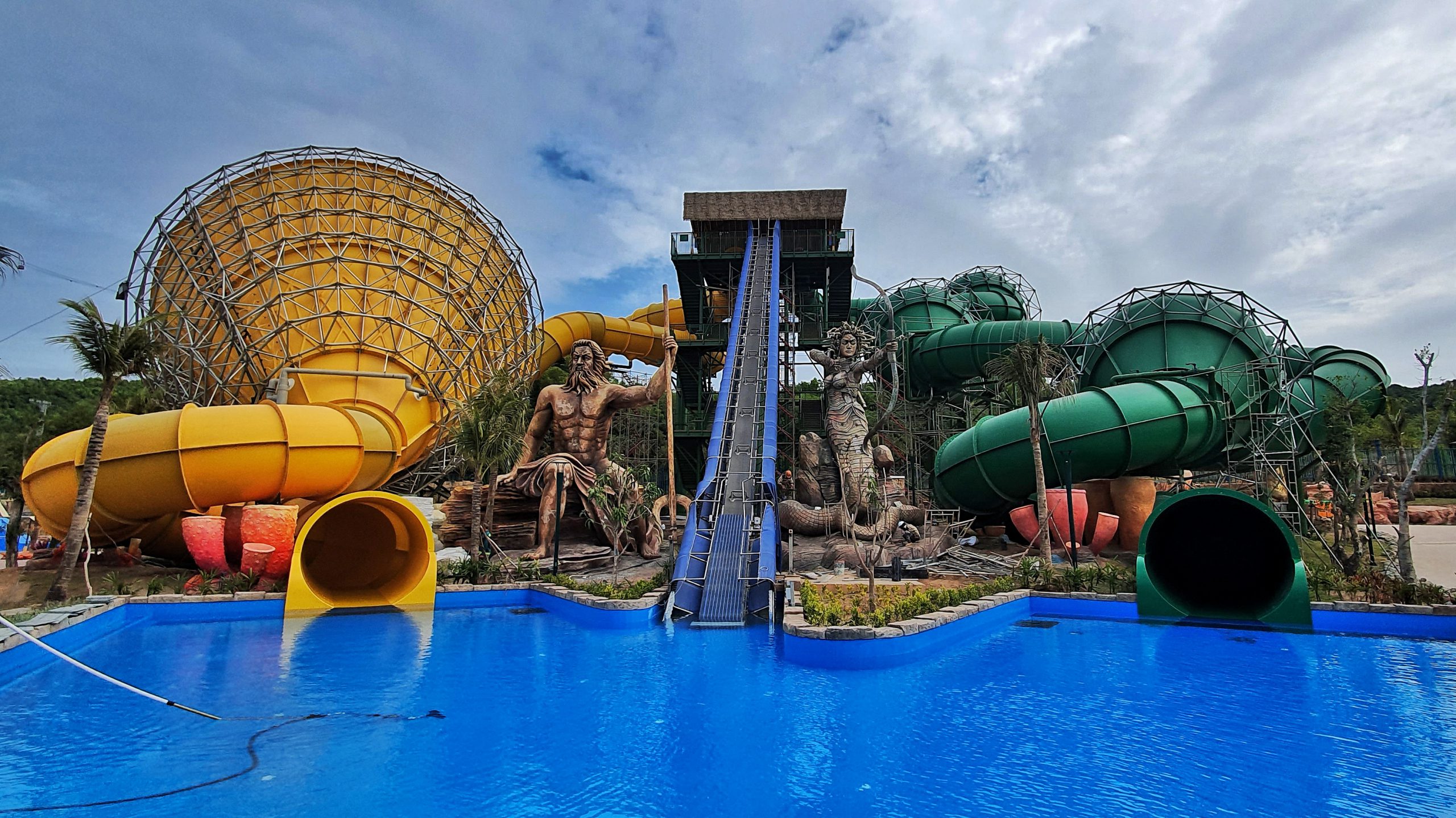
And I think what they lack is to try to bring that to life, because level one is sort of, okay, let’s just have very basic park, right. Concrete slab with rides and pools.
The next level is let’s make it look nice and let’s have some landscaping. Let’s have maybe some statues.
And then level three is really like an integrated story that is consistent throughout the park. The zones really match and walking throughout that park, you sort of feel like you’re on a journey.
And I think the next level above that is trying to see how to bring that to life where the guests are not just passively seeing things but that you actually bring that to life, not just through like shows and costume characters, but it’s deeply ingrained with people that you feel you’re actually having a transformative experience, especially in Vietnam, where the fairytales here, they all have sort of a moral, they all are about how you should behave.
I dove into the fairytales in Vietnam because they’re fascinating in a way that it’s the fight between the mountain and the ocean, and it always has something to learn from that you can think, oh, this is the right way to behave.
This is how I should treat my family. This is how I should treat the land, the country. This is what’s important.
And so I think that next, that last step and the step before that, instead of just having a beautiful environment and people come there to take pictures, how to bring it to life is something that is huge opportunity that will need to happen because more parks are beautifully themed.
More parks will have a story, more parks will become more and more authentic or move more into that fantasy world. But how to bring that to life and how to get people to come away with a feeling that, oh, we’ve actually, like, not just enjoyed ourselves, but we’ve maybe changed is a very high aspiration.
But I would love to do more than just having people say, I’ve taken pictures, I’ve been on the slides, and I’ve enjoyed my time.
This has really been something that we’ll forever remember instead of the other 10 parks that we’ll do in the future.
Won: Sure. That’s like the Holy Grail, right? The transformational kind of experience.
Daan: Yeah. And I think that here, there’s definitely some improvements that can be made in like customer service, the flexibility. You drop an ice cream in Disney and the first Disney employee that sees that will be like, oh, sorry, here’s a new ice cream.
Whereas here it’s like, oh, somebody dropped their ice cream. Well, I would like to give them a new ice cream, but I can’t make any decisions on that.
And if I take an extra ice cream, I have to justify who’s going to pay for that, how it’s going to be recorded. And that is a constant struggle that I think while the mindsets will need to change because of more competition, also the way of working is going to change.
Yeah, I think that improves while we’re being here and trying to push for these changes. But it’ll be a continuous process for the next few years.
Conceptualizing Within Sun Group
Won: Yeah. Actually, that brings up a question I had about Sun Group’s theme parks and themed experiences in general, where’s the vision for each of the parks coming from?
Is it coming directly from the chairman or is there like an internal Imagineering-esque team that develops these, where is it, where are the ideas emanating from, like the entire culture and vision?
Daan: The chairman, if you see any Sun World project, I think the chairman never says, let’s do something quick and cheap and easy.
The chairman always wants to deliver a unique experience, and sometimes he knows what he wants. I think the French Village was a really beautiful vision.
And the Sunset Town, which is sort of a Mediterranean town, I think really came more from the Chairman. But then oftentimes there’s just the assignment of, hey, look, there has to be something that is going to be beautiful, that attracts people unique and yeah, fits within the Sun World Sun Group mandate of delivering exceptional guest like guest experiences.
So, many of the projects there have been like overseas designers that have been working on the concepts, whether that is the Golden Bridge or whether that is the new Kiss Bridge that is being built in the South.
It’s a bridge that goes around and then it’s splits into two different sections of which the top section almost connects, but doesn’t fully. And so you can walk over that top section and sort of meet in the middle and have this idea of the Kiss bridge, which both symbolizes the love story in a fairytale of a very traditional fairytale of love in Vietnam that people were separated and they need to come back together to fall in love.
But also on the Vietnamese Valentine’s Day, this sun will be exactly in between those two points.
And so it’s not just the theme, it’s also the engineering that has been very smart behind that and a really cool way of a concept coming to life.
So it’s a bit of both. I think the storytelling, for example, from Sam Son, it was clear with the amount of parks that we have from like both a board of directors, the operational team, that it had to become an authentic experience.
Which experience that becomes, that is something that the design team works with the operational team and the concept designers that are usually overseas on making that first concept.
And sometimes even the changes in Bana Hills, there’s been two or three different concepts that are presented for example, a new castle that is under construction now.
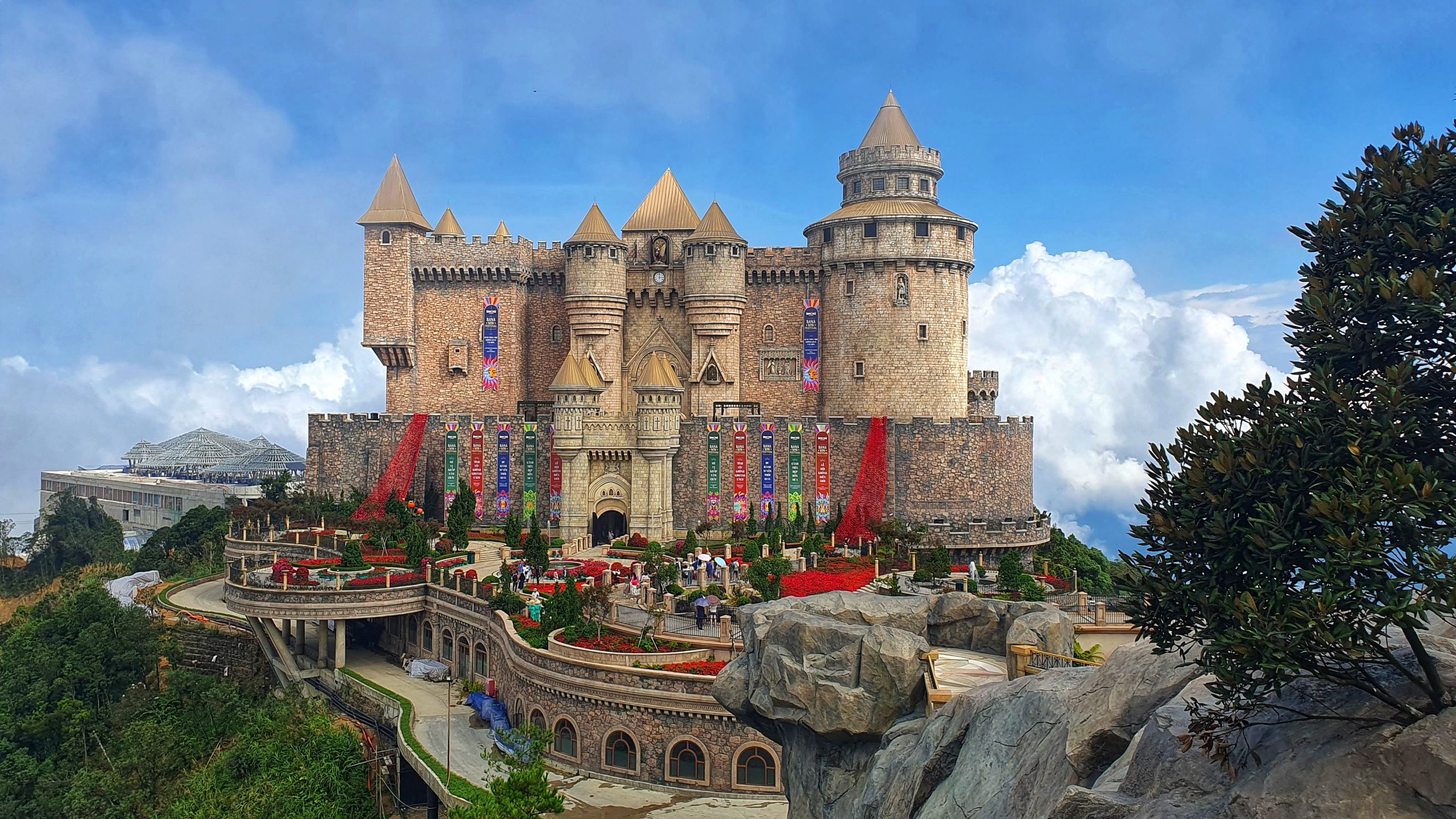
And the concepts are quite far apart so that it’s clear, okay, how do we wanna move forward? But the concepts will need to fit into a larger theme of, in this case, Bana Hills.
It’s the land of giants and ferries and giants and ferries are things that, again, come from Vietnam.
And I think now tie in the Golden Bridge with the other things that are there, maybe slightly less with the European village, but much more with the traditional, you can imagine that the giants lived in these giant castles that are being built.
So there’s ways of tying that together. But yeah, sometimes you have to, you can start with a beautiful story and build your park around it, and sometimes you have to sort of come up with a story that fits within the constraints or the things that you already have. And so it’s a bit of both here.
Career Advice
Won: I see. Okay. All right, well, is there anything else you want to mention, you feel like maybe we didn’t have sufficient time or treatment on?
Daan: I think we covered a lot. I’m going through sort of my notes life and work.
I think maybe the only thing that I would like to share still is just the opportunity to be here, that here in Vietnam, we’re part of changing the country.
And I never thought I would do anything on this scale and maybe as an inspirational piece to younger readers.
I think that the key thing that has brought me here is just looking for great places to work, great bosses, and most importantly, what you can learn.
And that learning is more important than a position. I’ve never really chased any position.
But I think if you look for a place where you can learn something that you’re interested by, you have a good boss, a good work culture, then that will really get you far in life.
And I’ve just been really lucky, I think, in all of these positions. But yeah, the parts that was hard work is the learning.
And I think that as long as you do that, that really gives you a great career.
